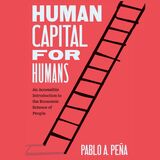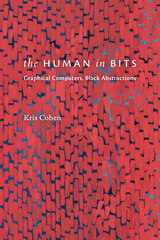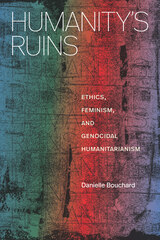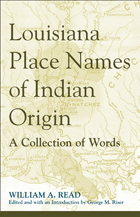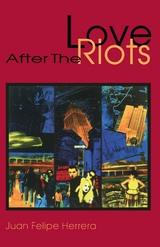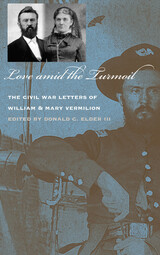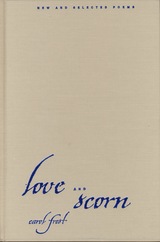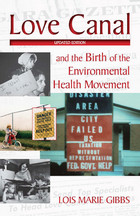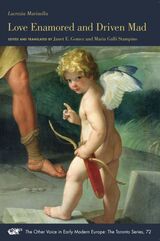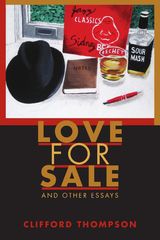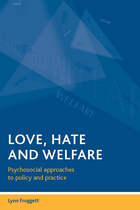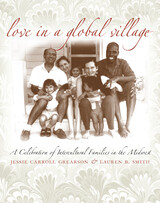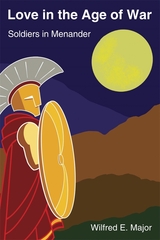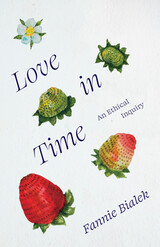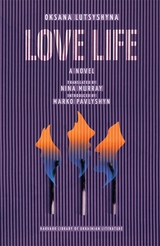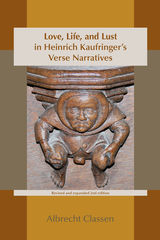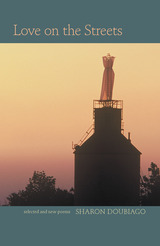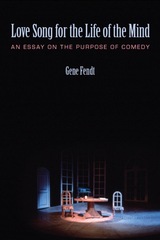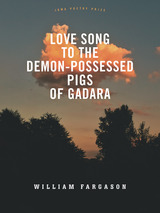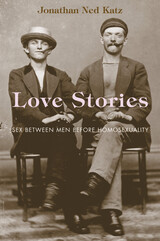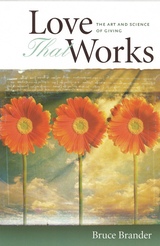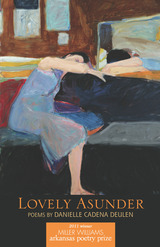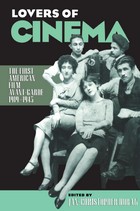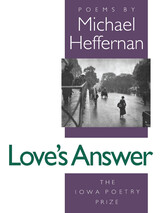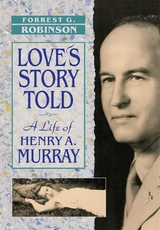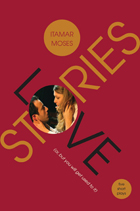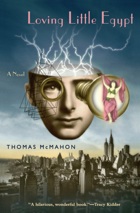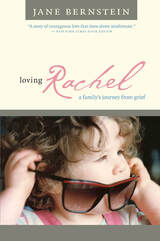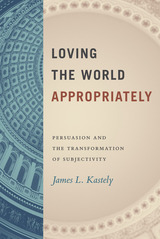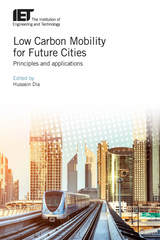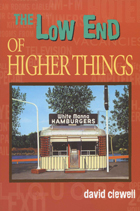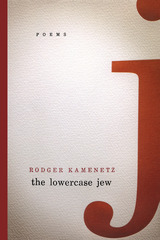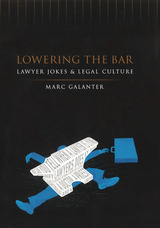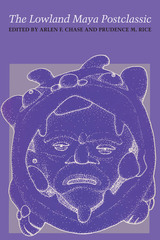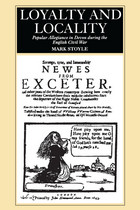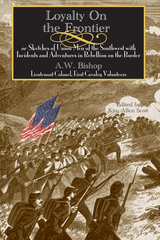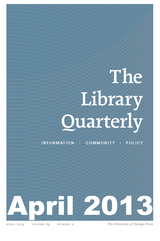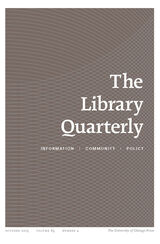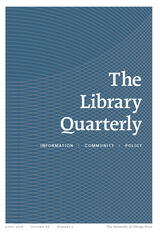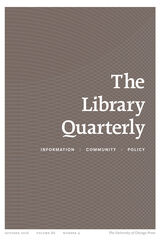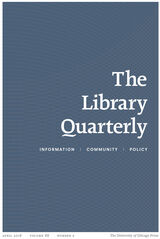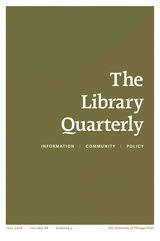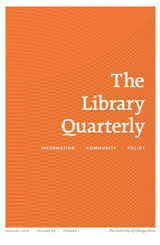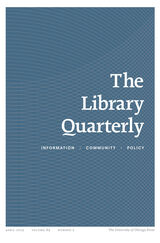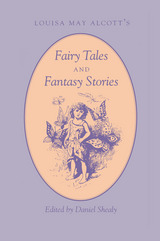 Louisa May Alcott's Fairy Tales and Fantasy Stories: Fairy Tales Fantasy Stories
Daniel Shealy
University of Tennessee Press, 1992 "Louisa May Alcott's bewitching fantasies and fairy tales are now restored to her readers; Daniel Shealy's sensitive editing and lucid introduction enhance this valuable collection." —Sarah Elbert, SUNY Binghamton
"We are all in Shealy's debt for making available this large, previously unstudied corpus of Louisa May Alcott's writing. Alcott is here truly presented as 'the child's friend.'" —Joel Myerson, University of South Carolina
Louisa May Alcott is best known for her domestic novels, including her classic tale Little Women. However, Alcott was also a pioneered in American fantasy fiction, having written thirty-eight fairy tales and fantasy stories that span her entire writing career, from 1854–1888. This is the first single volume to include all of Alcott's fantasy tales, many of which have not been published since the late nineteenth or early twentieth century. Daniel Shealy's critical and historical introduction places Alcott's fantasy work into the context of American fantasy literature and culture.
A product of the age of moral fiction, Alcott was greatly influenced in her writings by both the didactic adult fantasy novelists of her day and her father's strong moral teachings. Recognizing the need for children's fantasy literature that possessed storylines and characters capable of subtly conveying the advantages of moral behavior, Alcott began writing didactic tales that aimed to stimulate children's imaginations, give recognition to their problems, and offer solutions or suggestions that would make them better individuals in society.
While these stories can make no claim to being great art, they are an important segment of Alcott's canon. They demonstrate that, while she was exploring new territory with some of her work, she was also working within the existing tradition of the didactic fairy tale. Covering the entire span of her literary career, these tales, from her first book to her last, prove she never lost the love of the "fairy folk."
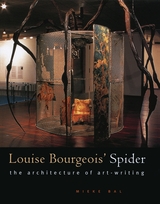 Louise Bourgeois' Spider: The Architecture of Art-Writing
Mieke Bal
University of Chicago Press, 2001 The sculptor Louise Bourgeois is best known for her monumental abstract sculptures, one of the most striking of which is the installation Spider (1997). Too vast in scale to be viewed all at once, this elusive structure resists simple narration. It fits both no genre and all of them—architecture, sculpture, installation. Its contents and associations evoke social issues without being reducible to any one of them. Here, literary critic and theorist Mieke Bal presents the work as a theoretical object, one that can teach us how to think, speak, and write about art.
Known for her commentary on the issue of temporality in art, Bal argues that art must be understood in relationship to the present time of viewing as opposed to the less-immediate contexts of what has preceded the viewing, such as the historical past of influences and art movements, biography and interpretation. In ten short chapters, or "takes," Bal demonstrates that the closer the engagement with the work of art, the more adequate the result of the analysis. She also confronts issues of biography and autobiography—key themes in Bourgeois's work—and evaluates the consequences of "ahistorical" experiences for art criticism, drawing on diverse sources such as Bernini and Benjamin, Homer and Eisenstein.
This short, beautiful book offers both a theoretical model for analyzing art "out of context" and a meditation on a key work by one of the most engaging artists of our era.
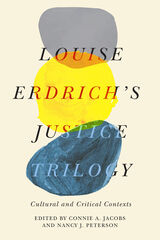 Louise Erdrich's Justice Trilogy: Cultural and Critical Contexts
Connie A. Jacobs
Michigan State University Press, 2021 Louise Erdrich is one of the most important, prolific, and widely read contemporary Indigenous writers. Here leading scholars analyze the three critically acclaimed recent novels—The Plague of Doves (2008), The Round House (2012), and LaRose (2016)—that make up what has become known as Erdrich’s “justice trilogy.” Set in small towns and reservations of northern North Dakota, these three interwoven works bring together a vibrant cast of characters whose lives are shaped by history, identity, and community. Individually and collectively, the essays herein illuminate Erdrich’s storytelling abilities; the complex relations among crime, punishment, and forgiveness that characterize her work; and the Anishinaabe contexts that underlie her presentation of character, conflict, and community. The volume also includes a reader’s guide to each novel, a glossary, and an interview with Erdrich that will aid in readers’ navigation of the justice novels. These timely, original, and compelling readings make a valuable contribution to Erdrich scholarship and, subsequently, to the study of Native literature and women’s authorship as a whole.
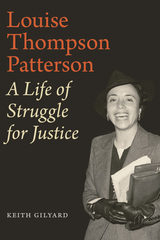 Louise Thompson Patterson: A Life of Struggle for Justice
Keith Gilyard
Duke University Press, 2017 Born in 1901, Louise Thompson Patterson was a leading and transformative figure in radical African American politics. Throughout most of the twentieth century she embodied a dedicated resistance to racial, economic, and gender exploitation. In this, the first biography of Patterson, Keith Gilyard tells her compelling story, from her childhood on the West Coast, where she suffered isolation and persecution, to her participation in the Harlem Renaissance and beyond. In the 1930s and 1940s she became central, along with Paul Robeson, to the labor movement, and later, in the 1950s, she steered proto-black-feminist activities. Patterson was also crucial to the efforts in the 1970s to free political prisoners, most notably Angela Davis. In the 1980s and 1990s she continued to work as a progressive activist and public intellectual. To read her story is to witness the courage, sacrifice, vision, and discipline of someone who spent decades working to achieve justice and liberation for all.
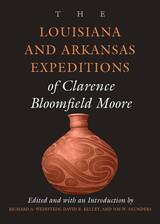 The Louisiana and Arkansas Expeditions of Clarence Bloomfield Moore
Clarence Bloomfield Moore
University of Alabama Press, 2004 A Dan Josselyn Memorial Publication
The ninth and final volume in the C.B. Moore reprint series that covers archaeological discoveries along North American Waterways.
Clarence B. Moore (1852-1936), a wealthy Philadelphia socialite, paper company heir, and photographer, made the archaeology of the Southeast his passion. Beginning in the 1870s, Moore systematically explored prehistoric sites along the major waterways of the region, from the Ohio River south to Florida and as far west as Texas, publishing his findings, at his own expense, with the Academy of Natural Sciences of Philadelphia.
This volume, the final in a series of nine, includes Moore’s investigations along waterways of Arkansas and Louisiana—the Ouachita, Red, Saline, Black, Tensas, and Atchafalaya Rivers—in three complete field sessions ending in 1909, 1912, and 1913. He located and mapped more than 185 mounds and cemeteries. Artifacts recovered in this territory, such as ceramic effigy pots, earthenware pipes, arrowheads, celts, and projectile points, include some of the most important ones discovered by Moore in his 47 years of excavating. Included in this volume is a CD containing the 69 color illustrations from all the original expedition volumes.
The elaborate earthwork of Poverty Point, located in West Carroll Parish, Louisiana, is perhaps the most remarkable archaeological site presented in the volume. In some cases, Moore documented sites along the tributaries that have since been destroyed by river action or looters. In other cases, the National Register of Historic Sites and concerned landowners in Arkansas and Louisiana have preserved the record of aboriginal peoples and their life ways that was first illuminated by Moore's sophisticated study.
Louisiana Place Names of Indian Origin: A Collection of Words
William A. Read, edited and with an introduction by George M. Riser
University of Alabama Press, 2008 His writings spanned five decades and have been instrumental across a wide range of academic disciplines. Most importantly, Read devoted a good portion of his research to the meaning of place names in the southeastern United States—especially as they related to Indian word adoption by Europeans. This volume includes his three Louisiana articles combined: Louisiana: Louisiana Place-Names of Indian Origin (1927), More Indian Place-Names in Louisiana (1928), and Indian Words (1931). Joining Alabama's reprint of Indian Places Names in Alabama and Florida Place Names of Indian Origin and Seminole Personal Names, this volume completes the republication of the southern place name writings of William A. Read.
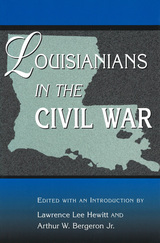 Louisianians in the Civil War
Edited & Intro by Lawrence Lee Hewitt & Arthur W. Bergeron, Jr.
University of Missouri Press, 2002
Louisianians in the Civil War brings to the forefront the suffering endured by Louisianians during and after the war—hardships more severe than those suffered by the majority of residents in the Confederacy. The wealthiest southern state before the Civil War, Louisiana was the poorest by 1880. Such economic devastation negatively affected most segments of the state’s population, and the fighting that contributed to this financial collapse further fragmented Louisiana’s culturally diverse citizenry. The essays in this book deal with the differing segments of Louisiana’s society and their interactions with one another.
Louisiana was as much a multicultural society during the Civil War as the United States is today. One manner in which this diversity manifested itself was in the turning of neighbor against neighbor. This volume lays the groundwork for demonstrating that strongholds of Unionist sentiment existed beyond the mountainous regions of the Confederacy and, to a lesser extent, that foreigners and African Americans could surpass white, native-born Southerners in their support of the Lost Cause. Some of the essays deal with the attitudes and hardships the war inflicted on different classes of civilians (sugar planters, slaves, Union sympathizers, and urban residents, especially women), while others deal with specific minority groups or with individuals.
Written by leading scholars of Civil War history, Louisianians in the Civil War provides the reader a rich understanding of the complex ordeals of Louisiana and her people. Students, scholars, and the general reader will welcome this fine addition to Civil War studies.
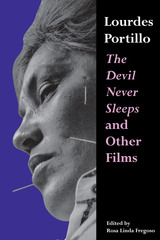 Lourdes Portillo: The Devil Never Sleeps and Other Films
Edited by Rosa Linda Fregoso
University of Texas Press, 2001 Filmmaker Lourdes Portillo sees her mission as "channeling the hopes and dreams of a people." Clearly, political commitment has inspired her choice of subjects. With themes ranging from state repression to AIDS, Portillo's films include: Después del Terremoto, the Oscar-nominated Las Madres: The Mothers of the Plaza de Mayo,La Ofrenda: The Days of the Dead,The Devil Never Sleeps, and Corpus: A Home Movie for Selena. The first study of Portillo and her films, this collection is collaborative and multifaceted in approach, emphasizing aspects of authorial creativity, audience reception, and production processes typically hidden from view. Rosa Linda Fregoso, the volume editor, has organized the book into three parts: interviews (by Fregoso and Kathleen Newman and B. Ruby Rich); critical perspectives (essays by Fregoso, Yvonne Yarbro-Bejarano, Sylvie Thouard, Norma Iglesias, and Barbara McBane); and production materials (screenplays, script notes, storyboards, etc.). This innovative collection provides "inside" information on the challenges of making independent films. By describing the production constraints Portillo has surmounted, Fregoso deepens our appreciation of this gifted filmmaker's life, her struggles, and the evolution of her art.
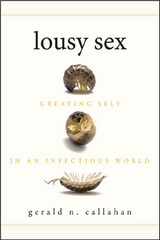 Lousy Sex
Gerald N. Callahan
University Press of Colorado, 2013 In Lousy Sex Gerald Callahan explores the science of self, illustrating the immune system’s role in forming individual identity. Blending the scientific essay with deeply personal narratives, these poignant and enlightening stories use microbiology and immunology to explore a new way to answer the question, who am I?
“Self” has many definitions. Science has demonstrated that 90 percent of the cells in our bodies are bacteria—we are in many respects more non-self than self. In Lousy Sex, Callahan considers this microbio-neuro perspective on human identity together with the soulful, social perception of self, drawing on both art and science to fully illuminate this relationship.
In his stories about where we came from and who we are, Callahan uses autobiographical episodes to illustrate his scientific points. Through stories about the sex lives of wood lice, the biological advantages of eating dirt, the question of immortality, the relationship between syphilis and the musical genius of Beethoven, and more, this book creates another way, a chimeric way, of seeing ourselves. The general reader with an interest in science will find Lousy Sex fascinating.
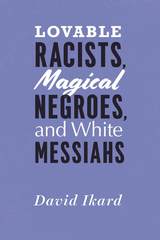 Lovable Racists, Magical Negroes, and White Messiahs
David Ikard
University of Chicago Press, 2017 In this incredibly timely book, David Ikard dismantles popular white supremacist tropes, which effectively devalue black life and trivialize black oppression. Lovable Racists, Magical Negroes, and White Messiahs investigates the tenacity and cultural capital of white redemption narratives in literature and popular media from Uncle Tom’s Cabin to The Help.
In the book, Ikard explodes the fiction of a postracial society while awakening us to the sobering reality that we must continue to fight for racial equality or risk losing the hard-fought gains of the Civil Rights movement. Through his close reading of novels, films, journalism, and political campaigns, he analyzes willful white blindness and attendant master narratives of white redemption—arguing powerfully that he who controls the master narrative controls the perception of reality. The book sounds the alarm about seemingly innocuous tropes of white redemption that abound in our society and generate the notion that blacks are perpetually indebted to whites for liberating, civilizing, and enlightening them. In Lovable Racists, Magical Negroes, and White Messiahs, Ikard expertly and unflinchingly gives us a necessary critical historical intervention.
 Love
Tomas Espedal
Seagull Books, 2022 A novel of intersecting historical threads.
Love narrates celebrated Norwegian writer Tomas Espedal’s search for death. The decision blossoms within I—the I-person—"like some interior bloom, black and beautiful” on a warm spring day in May, and it is this resolution that fills his self-imposed final year with meaning: Death. It can be so beautiful. One must create this beauty for oneself. One must submit to this naturalness, one must choose it, like pulling the duvet over oneself in bed or jumping off a bridge. But almost immediately life deals I a wildcard: a new love affair brings some of the best days he’s ever known and threatens his pact with death. Will he be able to leave Aka and the child she’s carrying? He has put an endpoint on his life to intensify experience but is he sure that disappearing from their lives, becoming an absent father, is the best thing for all of them? Set against Espedal’s constant reference, the ebb and flow of the seasons, something close to ecstasy propels this most introspective of narratives towards a universal truth.
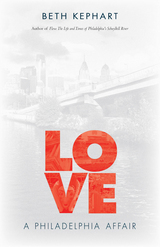 Love: A Philadelphia Affair
Beth Kephart
Temple University Press, 2017 Philadelphia has been at the heart of many books by award-winning author Beth Kephart, but none more so than the affectionate collection Love. This volume of personal essays and photographs celebrates the intersection of memory and place. Kephart writes lovingly, reflectively about what Philadelphia means to her. She muses about meandering on SEPTA trains, spending hours among the armor in the Philadelphia Museum of Art, and taking shelter at Independence Mall during a downpour. In Love, Kephart shares her loveof Reading Terminal Market at Thanksgiving: “This abundant, bristling market is, in November, the most unlonesome place around.” She waxes poetic about the shoulder-to-shoulder crowds, the mustard in a Salumeria sandwich, and the “coins slipped between the lips of Philbert the pig.” Kephart also extends her journeys to the suburbs, Glenside and Ardmore—and beyond, to Lancaster County, Pennsylvania; Stone Harbor, New Jersey; and Wilmington, Delaware. What emerges is a valentine to the City of Brotherly Love and its environs. In Love, Philadelphia is “more than its icons, bigger than its tagline.”
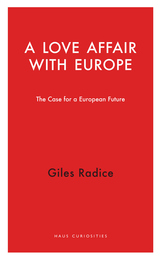 A Love Affair with Europe: The Case for a European Future
Giles Radice
Haus Publishing, 2018 From his earliest childhood, Giles Radice has held Europe close to his heart. Ten years after the end of World War II, at the age of 18, he set off to cycle across the continent. Meeting his European contemporaries, Radice discussed the prospects of building a new and better Europe, in which war might be ended forever and prosperity assured for all. It was clear to him that Europe should unite, and that Britain could not stay on the margins. Elected to Parliament, Radice did his part, pushing Britain to become and remain officially a part of Europe, and asking why the British always remained reluctant Europeans, forever skeptical about the benefits of greater union. Now, post-Brexit, he confronts those questions anew. Why have the underlying forces of the EU not pulled Britain closer to the continent? How much should we blame the negative influence of the media? From Thatcher’s Euroscepticism to Blair’s soundbites and the half-hearted campaign from both main parties in the referendum of 2016, Radice ultimately places the blame squarely on the political class itself.
 Love after The Tale of Genji: Rewriting the World of the Shining Prince
Charo B. D'Etcheverry
Harvard University Press, 2007 The eleventh-century masterpiece The Tale of Genji casts a long shadow across the literary terrain of the Heian period (794-1185). It has dominated critical and popular reception of Heian literary production and become the definitive expression of the aesthetics, poetics, and politics of life in the Heian court.
But the brilliance of Genji has eclipsed the works of later Heian authors, who have since been displaced from the canon and relegated to critical obscurity.
Charo B. D'Etcheverry calls for a reevaluation of late Heian fiction by shedding new light upon this undervalued body of work. D'Etcheverry examines three representative texts—The Tale of Sagoromo, The Tale of the Hamamatsu Middle Counselor, and Nezame at Night—as legitimate heirs to the literary legacy of Genji and as valuable indexes to the literary tastes and readerly expectations that evolved over the Heian period.
Balancing careful analyses of plot, character, and motif with keen insights into the cultural and political milieu of the late Heian period, D'Etcheverry argues that we should read such works not as mere derivatives of a canonical text, but as dynamic fictional commentaries and variations upon the tropes and subplots that continue to resonate with readers of Genji.
Love After the Riots
Juan Felipe Herrera
Northwestern University Press, 1996 A "fin-de-siecle epic", Juan Felipe Herrera's After the Riots chronicles a ten-and-a-half hour love affair through the streets of Los Angeles, revealing a world marred by chaos and redeemed by beauty. These are wild poems that force us to consider the nature of our modern-day lives, the world around us, and the prospect of love in the shadow of hopelessness.
Love amid the Turmoil: The Civil War Letters of William and Mary Vermilion
Donald C. Elder, III
University of Iowa Press, 2003 William Vermilion (1830-1894) served as a captain in Company F of the 36th Iowa Infantry from October 1862 until September 1865. Although he was a physician in Iconium in south central Iowa at the start of the war, after it ended he became a noted lawyer in nearby Centerville; he was also a state senator from 1869 to 1872. Mary Vermilion (1831-1883) was a schoolteacher who grew up in Indiana; she and William married in 1858. In this volume historian Donald Elder provides a careful selection from the hundreds of supportive, informative, and heart-wrenching letters that they wrote each other during the war—the most complete collection of letters exchanged between a husband and a wife during the Civil War.
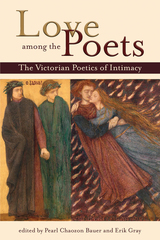 Love among the Poets: The Victorian Poetics of Intimacy
Pearl Chaozon Bauer; Erik Gray
Ohio University Press, 2024 British literature of the Victorian period has always been celebrated for the quality, innovativeness, and sheer profusion of its love poetry. Every major Victorian poet produced notable poems about love. This includes not only canonical figures, such as Alfred Lord Tennyson, Robert and Elizabeth Barrett Browning, and Christina Rossetti, but also lesser-known poets whose works have only recently become widely recognized and studied, such as Augusta Webster and the many often anonymous working-class poets whose verses filled the pages of popular periodicals. Modern critics have claimed, convincingly, that love poetry is not just one strain of Victorian poetry among many; it is arguably its representative, even definitive, mode. This collection of essays reconsiders the Victorian poetry of love and, just as importantly, of intimacy—a more inclusive term that comprehends not only romance but love for family, for God, for animals, and for language itself. Together the essays seek to define a poetics of intimacy that arose during the Victorian period and that continues today, a set of poetic structures and strategies by which poets can represent and encode feelings of love. There exist many studies of intimate relations (especially marriage) in Victorian novels. But although poetry rivals the novel in the depth and diversity of its treatment of love, marriage, and intimacy, that aspect of Victorian verse has remained underexamined. Love among the Poets offers an expansive critical overview. With its slate of distinguished contributors, including scholars from the US, Canada, Britain, and Australia, the volume is a wide-ranging account of this vital era of poetry and of its importance for the way we continue to write, love, and live today.
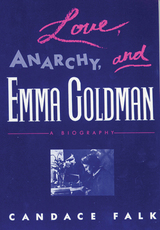 Love, Anarchy, & Emma Goldman: A Biography
Falk, Candace
Rutgers University Press, 1990
Candace Falk's biography captures Goldman's colorful life as a social and labor reformer, revolutionary, anarchist, feminist, agitator for free love and free speech, and advocate of birth control. And it gives the reader a rare glimpse into Goldman as a woman, alone, searching for the intimacy of a love relationship to match her radiant social vision. Falk explores the clash between Goldman's public vision and private life, focusing on her intimate relationship with Ben Reitman, Chicago's celebrated social reformer, hobo king, and red-light district gynecologist. During this passionate and stormy relationship, Goldman lectured in public about free love and women's independence, while in private she struggled with intense jealousy and longed for the comfort of a secure relationship. Falk's account draws upon a serendipitous discovery of a cache of intimate letters between Goldman and Reitman. Falk then goes beyond Goldman's ten-year relationship with Reitman, following Goldman's inner passions through her years of exile and later life. Written with a literary sensitivity, Falk tells a riveting story, consistently placing Goldman in the context of late nineteenth- and early twentieth-century radicalism.
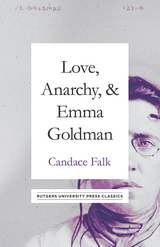 Love, Anarchy, & Emma Goldman: A Biography
Candace Serena Falk
Rutgers University Press, 2019 “What this remarkable book does . . . is to remind us of that passion, that revolutionary fervor, that camaraderie, that persistence in the face of political defeat and personal despair so needed in our time as in theirs.” —Howard Zinn
“Fascinating …With marvelous clarity and depth, Candace Falk illuminates for us an Emma Goldman shaped by her time yet presaging in her life the situation and conflicts of women in our time.” —Tillie Olsen
One of the most famous political activists of all time, Emma Goldman was also infamous for her radical anarchist views and her “scandalous” personal life. In public, Goldman was a firebrand, confidently agitating for labor reform, anarchism, birth control, and women’s independence. But behind closed doors she was more vulnerable, especially when it came to the love of her life.
Love, Anarchy, & Emma Goldman is an account of Goldman’s legendary career as a political activist. But it is more than that—it is a biography that offers an intimate look at how Goldman’s passion for social reform dovetailed with her passion for one man: Chicago activist, hobo king, and red-light district gynecologist Ben Reitman. Candace Falk takes us into the heart of their tumultuous love affair, finding that even as Goldman lectured on free love, she confronted her own intense jealousy.
As director of the Emma Goldman papers, Falk had access to over 40,000 writings by Goldman—including her private letters and notes—and she draws upon these archives to give us a rare insight into this brilliant, complex woman’s thoughts. The result is both a riveting love story and a primer on an exciting, explosive era in American politics and intellectual life.
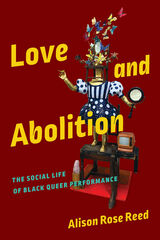 Love and Abolition: The Social Life of Black Queer Performance
Alison Rose Reed
Ohio State University Press, 2022 In Love and Abolition, Alison Rose Reed traces how the social life of Black queer performance from the 1960s to the present animates the unfinished work of abolition. She grounds social justice–oriented reading and activist practices specifically in the movement to abolish the prison industrial complex, with far-reaching implications for how we understand affective response as a mobilizing force for revolutionary change.
Reed identifies abolition literature as an emergent field of inquiry that emphasizes social relationships in the ongoing struggle to dismantle systems of coercion, criminalization, and control. Focusing on love as an affective modality and organizing tool rooted in the Black radical tradition’s insistence on collective sociality amidst unrelenting state violence, Reed provides fresh readings of visionaries such as James Baldwin, Ntozake Shange, Sharon Bridgforth, and vanessa german. Both abolitionist manifesto and examination of how Black queer performance offers affective modulations of tough and tender love, Love and Abolition ultimately calls for a critical reconsideration of the genre of prison literature—and the role of the humanities—during an age of mass incarceration.
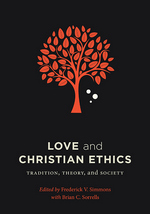 Love and Christian Ethics: Tradition, Theory, and Society
Frederick V. Simmons, Editor. With Brian C. Sorrells
Georgetown University Press, 2016 At the heart of Christian ethics is the biblical commandment to love God and to love one's neighbor as oneself. But what is the meaning of love? Scholars have wrestled with this question since the recording of the Christian gospels, and in recent decades teachers and students of Christian ethics have engaged in vigorous debates about appropriate interpretations and implications of this critical norm. In Love and Christian Ethics, nearly two dozen leading experts analyze and assess the meaning of love from a wide range of perspectives. Chapters are organized into three areas: influential sources and exponents of Western Christian thought about the ethical significance of love, perennial theoretical questions attending that consideration, and the implications of Christian love for important social realities. Contributors bring a richness of thought and experience to deliver unprecedentedly broad and rigorous analysis of this central tenet of Christian ethics and faith. William Werpehowski provides an afterword on future trajectories for this research. Love and Christian Ethics is sure to become a benchmark resource in the field.
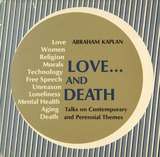 Love... and Death
Abraham Kaplan
University of Michigan Press, 2025 In these eleven talks—originally presented as the highly acclaimed television series "The Worlds of Abraham Kaplan"—a great teacher discusses the most important questions of traditional and contemporary human experience. Dr. Kaplan's views reflect a deep concern for human dignity and a sensitive awareness of the obstacles which often hinder our self-understanding, our relationships, and our happiness. With wisdom and humane wit, Kaplan deals with the attitudes and emotions which many of us feel but which few of us can articulate.On Women: "...the kind of discrimination which makes a problem for women, blacks, Catholics, Jews, Chicanos, and all sorts of minorities and special groups in our society, is this: they are responded to differently in situations in which the differences make no difference."On Religion: "...authentic religious life, in all cultures and all faiths, is something that comes out of the fullness of a man's heart. It is a gift in which we express our love, rather than something which comes out of the poverty of our lives as a demand that something be given to us."On Morals: "...the great moral leaders of mankind, the prophets, the teachers, the martyrs—they have been the very men and women who made trouble."On Technology: "We talk of modern technology as a Frankenstein monster that threatens to destroy us; the symbol is perhaps better than is often appreciated. Frankenstein was not the name of the monster; Frankenstein was the name of the human being who created the monster."On Loneliness: "I believe that one of the tragedies of our time is that if we have no other way of relating to others, we do so by violence."On Aging: "In many ways, it is the old that are to be envied by the young; they have so much less to lose that often they are capable of much more dedication and commitment to the values, ideals, and principles which provide meaning to all our lives." On Death: "To die in a manner that is worthy of a human being, is to die with a sense of one's identity as the human being he is; as the locus of all the human values which intersect, which come to a meeting-point in his being, as an embodiment of human dignity.""With Abraham Kaplan," as Alfred Slote notes in his Foreword, "the reader is in the hands of a master teacher, a philosopher, a gadfly, and a delightful and impassioned storyteller." Love... and Death is a book to own, to ponder, and to give to friends you cherish.
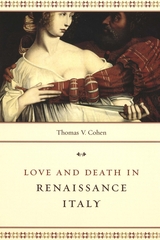 Love and Death in Renaissance Italy
Thomas V. Cohen
University of Chicago Press, 2004 Gratuitous sex. Graphic violence. Lies, revenge, and murder. Before there was digital cable or reality television, there was Renaissance Italy and the courts in which Italian magistrates meted out justice to the vicious and the villainous, the scabrous and the scandalous. Love and Death in Renaissance Italy retells six piquant episodes from the Italian court just after 1550, as the Renaissance gave way to an era of Catholic reformation.
Each of the chapters in this history chronicles a domestic drama around which the lives of ordinary Romans are suddenly and violently altered. You might read the gruesome murder that opens the book—when an Italian noble takes revenge on his wife and her bastard lover as he catches them in delicto flagrante—as straight from the pages of Boccaccio. But this tale, like the other stories Cohen recalls here, is true, and its recounting in this scintillating work is based on assiduous research in court proceedings kept in the state archives in Rome.
Love and Death in Renaissance Italy contains stories of a forbidden love for an orphan nun, of brothers who cruelly exact a will from their dying teenage sister, and of a malicious papal prosecutor who not only rapes a band of sisters, but turns their shambling father into a pimp! Cohen retells each cruel episode with a blend of sly wit and warm sympathy and then wraps his tales in ruminations on their lessons, both for the history of their own time and for historians writing today. What results is a book at once poignant and painfully human as well as deliciously entertaining.
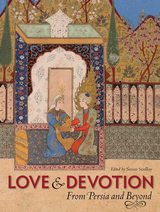 Love and Devotion: From Persia and Beyond
Edited by Susan Scollay
Bodleian Library Publishing, 2012
Yusuf and Zulaykha. Khusrau and Shirin. Layla and Majnun. For hundreds of years, Persian poets have captivated audiences with recitations and reinterpretations of timeless tales of earthly and spiritual love. These tales were treasured not only in Iran, but also across the neighboring Mughal and Ottoman Empires.
In Love and Devotion, leading specialists in literature, art history, and philosophy reveal new perspectives on these evocative stories and the exquisite illustrated manuscripts that convey them. Particularly in courtly settings, poetry was a key component of Persian cultural life from the fourteenth through the eighteenth century, and elite patrons commissioned copies of lyrical poems and epics told in verse. Beautifully presented here in full-page reproductions are more than one hundred folios from these illustrated manuscripts, representing masterful works from Hafiz, Rumi, and many others. Echoes of works by Persian poets are manifest across European literature from Dante and Shakespeare to the present, and this lavishly illustrated book reveals new perspectives on the universal theme of love.
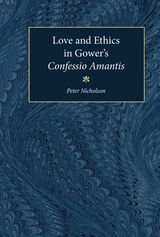 Love and Ethics in Gower's Confessio Amantis
Peter Nicholson
University of Michigan Press, 2005 In Love and Ethics, Peter Nicholson offers a comprehensive and accessible reading of Gower's Confessio, as well as a guide to the issues that it poses, linking all of the diverse elements of Gower's complex poem into a single broad view of its purpose and structure. Beginning with an investigation of the literary antecedents of the poem, the author then distinguishes the Confessio from its predecessors in order to discover what is most unique about it. In viewing the Confessio both as a poem and as a work of moral instruction, Love and Ethics illustrates the work's concern with the laws that govern human love, and its understanding of the elusiveness of moral certainty in a fallen world.
Intended for both specialists and non-specialists, Love and Ethics addresses many of the specific concerns of current Gower criticism, provides complete translations of all foreign quotation, and guides the novice reader through Gower's Middle English.
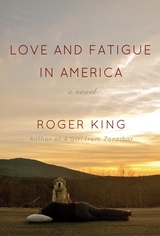 Love and Fatigue in America
Roger King
University of Wisconsin Press, 2012 Love and Fatigue in America records an Englishman’s decade-long journey through his newly adopted country in the company of a mystifying illness and a charismatic dog.
When he receives an unexpected invitation from an unfamiliar American university, he embraces it as a triumphant new beginning. Instead, on arrival, he is stricken with a persistent inability to stand up or think straight, and things quickly go wrong. Diagnosed with ME disease—chronic fatigue syndrome—he moves restlessly from state to state, woman to woman, and eccentric doctor to eccentric doctor, in a search for a love and a life suited to his new condition. The journey is simultaneously brave, absurd, and instructive.
Finding himself prostrate on beds and couches from Los Alamos to Albany, he hears the intimate stories offered by those he encounters—their histories, hurts, and hopes—and from these fragments an unsentimental map emerges of the inner life of a nation. Disability has shifted his interest in America from measuring its opportunities to taking the measure of its humanity. Forced to consider for himself the meaning of a healthy life and how best to nurture it, he incidentally delivers a report on the health of a country.
By turns insightful, comic, affecting, and profound, Roger King’s Love and Fatigue in America briskly compresses an illness, a nation, and an era through masterly blending of literary forms. In a work that defies categorization, and never loses its pace or poise, the debilitated narrator is, ironically, the most lively and fully awake figure in the book.
“Remarkable. . . . [S]mart and funny. . . .[A]musing observations about everything American. . . . [T]his is not a traditional novel. . . . [T]his, as it turns out, is a brilliant perspective from which to view and write about life. . . . [G]reat reckonings unfurl in mere paragraphs.”—Jackson Newspapers.com
“As the disease drives the narrator city to city, woman to woman, and doctor to doctor, it brings into relief many of America’s follies and excesses, most notably our health-care system, which King portrayed as antiquated, bureaucratic, and inhumane. After more than fifteen years, America brings the narrator ‘not aspiration realized, nor a largeness of life fitting to its open spaces, but the nascent ability to be satisfied with less.’”—The New Yorker
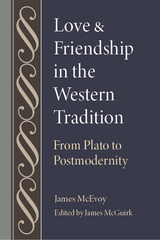 Love and Friendship in the Western Tradition: From Plato to Postmodernity
James McEvoy
Catholic University of America Press, 2023 Love and Friendship in the Western Tradition comprises a collection of essays written over a 25 year period by the late Rev. Professor James McEvoy on the theme of friendship. The book traces the genesis and development of philosophical treatments of friendship from Greek philosophy, through the Middle Ages, to modern and postmodern philosophy. The collection’s three major concerns are: (1) the history of philosophical discussions of friendship; (2) the role of friendship in the cultivation of the philosophical life; (3) the marginalization of friendship as a theme for philosophical reflection and practice in the modern period.
As the author was primarily a medievalist, a great deal of the focus of the essays is on the development of the theme of friendship in the Middle Ages (in the thought of Augustine, Aquinas, Aelred of Rievaulx, Henry of Ghent, Robert Grosseteste, etc.). However, this focus, while a value in itself, also serves to connect philosophical perspectives on friendship from before and after the middle ages. It connects to the time before inasmuch as much of the work done on friendship in the Middle Ages is anchored in interpretations of Aristotle and Plato, and it connects to the time after by providing a counterpoint to the modern paradigm of what constitutes the philosophical life.
The collection combines historical with thematic approaches to scholarship on this issue and is one of the only books of its kind to do so. It is, perhaps, unique in its historical sweep and will prove to be a canonical source for further research on this topic.
 Love and Globalization: Transformations of Intimacy in the Contemporary World
Mark B. Padilla
Vanderbilt University Press, 2007 Discussions of globalization usually focus on political, economic, and technological transformations, but fail to recognize how we experience these processes in our daily lives, including our most intimate acts and practices. In this volume, anthropologists and sociologists draw on long-term ethnographic research on love, gender, and sexuality in a broad range of regions to discuss how global forces shape marriage, commercial sex, the political economy of intimacy, and lesbian and gay expressions of companionship. The richly-textured ethnographies provoke a series of questions about emerging vocabularies for friendship and romance; the adoption of cultural forms from faraway places; the emergence of new desires, pleasures, and emotions that circulate as commodities in the global marketplace; and the ways economic processes shape public and private expressions of sexual intimacy.
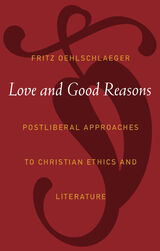 Love and Good Reasons: Postliberal Approaches to Christian Ethics and Literature
Fritz Oehlschlaeger
Duke University Press, 2003 Insisting on the vital, productive relationship between ethics and the study of literature, Love and Good Reasons demonstrates ways of reading novels and stories from a Christian perspective. Fritz Oehlschlaeger argues for the study of literature as a training ground for the kinds of thinking on which moral reasoning depends. He challenges methods of doing ethics that attempt to specify universally binding principles or rules and argues for the need to bring literature back into conversation with the most basic questions about how we should live. Love and Good Reasons combines postliberal narrative theology—especially Stanley Hauerwas’s Christian ethics and Alasdair MacIntyre’s idea of traditional inquiry—with recent scholarship in literature and ethics including the work of Martha Nussbaum, J. Hillis Miller, Wayne Booth, Jeffrey Stout, and Richard Rorty. Oehlschlaeger offers detailed readings of literature by five major authors—Herman Melville, Jane Austen, Anthony Trollope, Henry James, and Stephen Crane. He examines their works in light of biblical scripture and the grand narratives of Israel, Jesus, and the Church. Discussing the role of religion in contemporary higher education, Oehlschlaeger shares his own experiences of teaching literature from a religious perspective at a state university.
Love and Joy: Law, Language, and Religion in Ancient Israel
Yochanan Muffs and Thorkild Jacobsen
Harvard University Press, 1992 Studying the interplay of figurative language, law, and religious thought, Yochanan Muffs brings us a new understanding of both the Bible and ancient Near Eastern cultures. This first single-volume collection of the pivotal writings of this great religious humanist includes his studies of love and joy as metaphors, the laws of war in ancient Israel, the figurative nature of legal language, the role of the prophet and prophetic speech, and the expressions of belonging which united a culture.
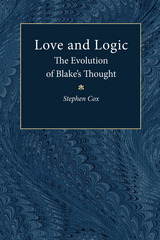 Love and Logic: The Evolution of Blake's Thought
Stephen Cox
University of Michigan Press, 1992 William Blake is usually regarded as the greatest poet of mysticism in the English language. His primary theme is love - love of God, love of the Divine Humanity that he often equated with God, and the sexual love that he regarded sometimes as an embodiment and sometimes as a parody of divine love. For Blake, love was not so much a virtue as a problem, a problem that he reassessed in different ways throughout his life, using a variety of logical tools. Love and logic may seem an unusual pair of concerns, especially for a visionary poet, but author Stephen Cox believes that in Blake's work the problems of love and logic evolve together, constantly influencing each other and determining the structure of the poet's vision. Scholars who have come to view Blake as a visionary whose work followed nonlinear processes have advanced the notion that his artistic achievement defies conventional interpretation. Love and Logic challenges the tendency in postmodern criticism to see authors and readers as confined by history, language, and logic, denied the ability discover truth or to communicate it in determinate form. Love and Logic emphasizes Blake's ambitious quest for truth, his desire to keep telling the story of human and divine love until he got it right, using all the strategies of logic available to him.
 Love and Loss: The Short Life of Ray Chapman
Scott H. Longert
Ohio University Press, 2024 The son of a coal miner from a small Illinois town, Cleveland Indians shortstop Ray Chapman lived the American dream until his untimely death at age twenty-nine. In his brief life, he reached the pinnacle of baseball success as the best shortstop in the American League. While many professional ballplayers struggled with meager salaries, the handsome Chapman had married heiress Kathleen Daly, one of Cleveland’s wealthiest women. With a child on the way and an executive job in the offseason, Chapman was moving toward a privileged place in society until an errant fastball fractured his skull and ended his life the next day. Late in the 1920 pennant race, the Indians were in New York for a key series against the Yankees. New York pitcher Carl Mays threw a high hard one that Chapman could not evade. He was taken to a nearby hospital, where doctors tried in vain to save his life. The tragedy did not end there. His widow took her own life eight years later, and their daughter, Rae, subsequently died from meningitis. Today, people visit Chapman’s impressive grave in Cleveland’s Lake View Cemetery, leaving baseballs and gloves in his memory. Though gone over a hundred years, he is well remembered as a Cleveland icon. This book goes far beyond the well-worn accounts of Chapman’s untimely death to illustrate the fullness of his short life.
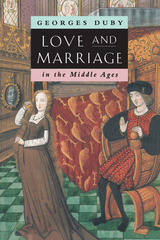 Love and Marriage in the Middle Ages
Georges Duby
University of Chicago Press, 1993 Preeminent medieval scholar Georges Duby argues that the structure of sexual relationships took its cue from the family and from feudalism—both bastions of masculinity—as he reveals the role of women, what they represented, and what they were in the Middle Ages.
Beautifully written in Duby's characteristically nuanced and powerful style, this collection is an ideal entree into Duby's thinking about marriage and the diversities of love, spousal decorum, family structure, and their cultural context in bodily and spiritual values. Love and Marriage in the Middle Ages will be of great interest to students in social and cultural history, medieval and early modern history, and women's studies, as well as those interested in the nature of social life in the Middle Ages.
Georges Duby (1919-1996) was a member of the Académie française and for many years held the distinguished chair in medieval history at the Collège de France. His books include The Three Orders; The Age of Cathedrals; The Knight, the Lady, and the Priest; Love and Marriage in the Middle Ages; and History Continues, all published by the University of Chicago Press.
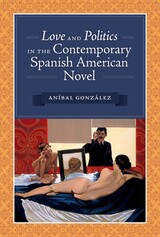 Love and Politics in the Contemporary Spanish American Novel
By Aníbal González
University of Texas Press, 2010 The Latin American Literary Boom was marked by complex novels steeped in magical realism and questions of nationalism, often with themes of surreal violence. In recent years, however, those revolutionary projects of the sixties and seventies have given way to quite a different narrative vision and ideology. Dubbed the new sentimentalism, this trend is now keenly elucidated in Love and Politics in the Contemporary Spanish American Novel. Offering a rich account of the rise of this new mode, as well as its political and cultural implications, Aníbal González delivers a close reading of novels by Miguel Barnet, Elena Poniatowska, Isabel Allende, Alfredo Bryce Echenique, Gabriel García Márquez, Antonio Skármeta, Luis Rafael Sánchez, and others. González proposes that new sentimental novels are inspired principally by a desire to heal the division, rancor, and fear produced by decades of social and political upheaval. Valuing pop culture above the avant-garde, such works also tend to celebrate agape—the love of one's neighbor—while denouncing the negative effects of passion (eros). Illuminating these and other aspects of post-Boom prose, Love and Politics in the Contemporary Spanish American Novel takes a fresh look at contemporary works.
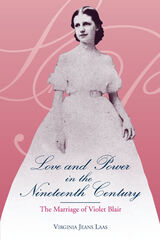 Love and Power in the Nineteenth Century: The Marriage of Violet Blair
Virginia Jeans Laas
University of Arkansas Press, 1998 Winner, 1999 Missouri Conference on History Book Award
This fascinating biography of a marriage in the Gilded Age closely examines the dynamic flow of power, control, and love between Washington blue blood Violet Blair and New Orleans attorney Albert Janin. Based on their voluminous correspondence as well as Violet’s extensive diaries, it offers a thoroughly intimate portrait of a fifty-four-year union which, in many ways, conformed to societal strictures, yet always created its own definition of itself in order to fit the flux of needs of both husband and wife. Central to their story is Violet’s fierce determination to maintain her autonomy within the patriarchic institution of marriage. An enduring belle who thought, talked, and acted with the assurance and self-confidence of one whose wishes demanded obedience, she rejected the Victorian ideal of women as silent, submissive consorts. Yet her feminism was a private one, not played out on a public stage but kept to the confines of her own daily life and marriage. With abundant documentary evidence to draw upon, Laas ties this compelling story to broader themes of courtiship behavior, domesticity, gender roles, extended family bonds, elitism, and societal stereotyping. Deeply researched and beautifully written, Love and Power in the Nineteenth Century has the dual virtue of making an important historical contribution while also appealing to a broad popular audience.
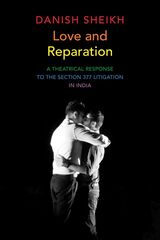 Love and Reparation: A Theatrical Response to the Section 377 Litigation in India
Danish Sheikh
Seagull Books, 2021 Two plays about the legal battle to decriminalize homosexuality in India.
On September 6, 2018, a decades-long battle to decriminalize queer intimacy in India came to an end. The Supreme Court of India ruled that Section 377, the colonial anti-sodomy law, violated the country’s constitution. “LGBT persons,” the Court said, “deserve to live a life unshackled from the shadow of being ‘unapprehended felons.’” But how definitive was this end? How far does the law’s shadow fall? How clear is the line between the past and the future? What does it mean to live with full sexual citizenship?
In Love and Reparation, Danish Sheikh navigates these questions with a deft interweaving of the legal, the personal, and the poetic. The two plays in this volume leap across court transcripts, affidavits (real and imagined), archival research, and personal memoir. Through his re-staging, Sheikh crafts a genre-bending exploration of a litigation battle, and a celebration of defiant love that burns bright in the shadow of the law.
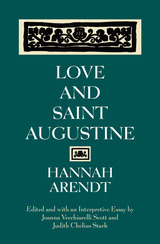 Love and Saint Augustine
Hannah Arendt
University of Chicago Press, 1995 Hannah Arendt began her scholarly career with an exploration of Saint Augustine's concept of caritas, or neighborly love, written under the direction of Karl Jaspers and the influence of Martin Heidegger. After her German academic life came to a halt in 1933, Arendt carried her dissertation into exile in France, and years later took the same battered and stained copy to New York. During the late 1950s and early 1960s, as she was completing or reworking her most influential studies of political life, Arendt was simultaneously annotating and revising her dissertation on Augustine, amplifying its argument with terms and concepts she was using in her political works of the same period. The disseration became a bridge over which Arendt traveled back and forth between 1929 Heidelberg and 1960s New York, carrying with her Augustine's question about the possibility of social life in an age of rapid political and moral change.
In Love and Saint Augustine, Joanna Vecchiarelli Scott and Judith Chelius Stark make this important early work accessible for the first time. Here is a completely corrected and revised English translation that incorporates Arendt's own substantial revisions and provides additional notes based on letters, contracts, and other documents as well as the recollections of Arendt's friends and colleagues during her later years.
Love and Scorn: New and Selected Poems
Carol Frost
Northwestern University Press, 2000 Love and Scorn: New and Selected Poems combines twenty new poems by Carol Frost with a substantial selection of work from her previous seven books. In forms ranging from the sonnet to the lyric to the narrative, Frost's poems are fiery, passionate meditations on experience and consciousness.
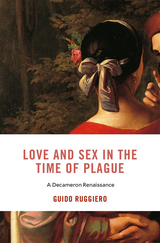 Love and Sex in the Time of Plague: A Decameron Renaissance
Guido Ruggiero
Harvard University Press, 2021 As a pandemic swept across fourteenth-century Europe, the Decameron offered the ill and grieving a symphony of life and love.
For Florentines, the world seemed to be coming to an end. In 1348 the first wave of the Black Death swept across the Italian city, reducing its population from more than 100,000 to less than 40,000. The disease would eventually kill at least half of the population of Europe. Amid the devastation, Giovanni Boccaccio’s Decameron was born. One of the masterpieces of world literature, the Decameron has captivated centuries of readers with its vivid tales of love, loyalty, betrayal, and sex. Despite the death that overwhelmed Florence, Boccaccio’s collection of novelle was, in Guido Ruggiero’s words, a “symphony of life.”
Love and Sex in the Time of Plague guides twenty-first-century readers back to Boccaccio’s world to recapture how his work sounded to fourteenth-century ears. Through insightful discussions of the Decameron’s cherished stories and deep portraits of Florentine culture, Ruggiero explores love and sexual relations in a society undergoing convulsive change. In the century before the plague arrived, Florence had become one of the richest and most powerful cities in Europe. With the medieval nobility in decline, a new polity was emerging, driven by Il Popolo—the people, fractious and enterprising. Boccaccio’s stories had a special resonance in this age of upheaval, as Florentines sought new notions of truth and virtue to meet both the despair and the possibility of the moment.
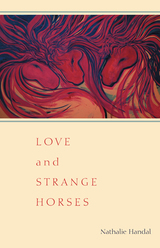 Love and Strange Horses
Nathalie Handal
University of Pittsburgh Press, 2010 "Trembles with belonging (and longing) and love and sex."
--The New York Times
"Nathalie Handal's Love and Strange Horses is riddled with provocative incantations that verge on a conjuring solidly based in this world and beyond. There's a subtle singing locked inside each poem that raises the stakes. This cosmopolitan voice belongs to the human family, and it luxuriates in crossing necessary borders. The pages are lit with scintillations that transport the reader to pithy zones of thought and pleasure."
--Yusef Komunyakaa
Nathalie Handal is an award-winning poet, playwright, and writer. She is the author of two previous poetry collections: The NeverField and The Lives of Rain. Handal is the editor of The Poetry of Arab Women: A Contemporary Anthology, winner of the PEN Oakland/Josephine Miles Award, and coeditor of Language for a New Century: Contemporary Poetry from the Middle East, Asia & Beyond. Her work has appeared in numerous anthologies and publications including Ploughshares, Crab Orchard Review, and the Literary Review. She was named an honored finalist for the 2009 Gift of Freedom Award.
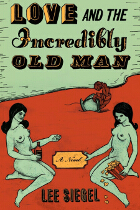 Love and the Incredibly Old Man: A Novel
Lee Siegel
University of Chicago Press, 2008 “It was the best of times, it was the worst of times” begins one chapter of critically acclaimed Lee Siegel’s new novel, Love and the Incredibly Old Man. “In the beginning” starts another. What else can a novelist do when hired as a ghostwriter by an elderly, irascible, conquistador-costumed man claiming to be the 540-year-old Juan Ponce de León? The fantastic life of that legendary explorer—inventor of rum, cigars, Coca-Cola, and popcorn—is the frame for Siegel’s fourth chronicle of love, lies, luck, loss, and labia.
Summoned with cold hard cash and a pinch of flattery, a professor and novelist named Lee Siegel finds himself in Eagle Springs, Florida, attempting to give form to the life of the man who, contrary to popular and historical opinion, did indeed find the Fountain of Youth. Spending humid days listening to the romantic ramblings of the old man and sleepless nights doubting yet trying to craft these reminiscences into a narrative that will satisfy the literary aspirations of his subject, Siegel the ghostwriter spins an improbable tale filled with Native Americans, insatiable monarchs, philandering cantors, deliriously passionate nuns, delicate actresses, androgynous artists, and deceptions small and large. For de León, and for Siegel too, centuries of conquest and colonialism, fortune and identity, are all refracted through the memories of the conquistador’s lovers, each and every one of them adored “more than any other woman ever.”
Comic, melancholic, lusty, and fully engaged with the act of invention, whether in love or on the page, Love and the Incredibly Old Man continues the real Lee Siegel’s exuberant exploration of that sentiment which Ponce de León confesses has “transported me to the most joyous heights, plunged me to the most dismal depths, and dropped me willy-nilly and dumbfounded at all places in between.”
Love and the Soul
Alan Williamson
University of Chicago Press, 1995 In Love and the Soul's title poem, a male speaker asks "not to believe/that what lights up the world from within is always the wrong thing" and is answered by a female speaker midway through the book who says "I don't think men and women/are meant to have relationships any more." Between these poles, Williamson's powerful collection explores the enormous burden of expectation that our culture has placed on love and its gifts to the soul.
 Love Apocalypse: New Intimacies and the Decline of Marriage and Fertility
Alex Nelson
Rutgers University Press, 2026 Marriage and fertility rates are falling around the world, upending social security planning and threatening economic growth. In Love Apocalypse, anthropologists present their insights into this society-altering demographic shift, drawing on their research into the ways love, romantic relationships and family are being transformed by cultural, social, and economic forces. Each case study in this volume examines a unique cultural context from either Asia (China, South Korea, Japan, India), Europe (Germany, Lithuania) or Latin America (Cuba, Peru) grounded in years of ethnographic research into how communities’ experiences and perceptions of love, marriage and family are changing in response to economic precarity, shifting gender relations, status competition, and diversifying cultural norms. It is increasingly clear that marriage and two-parent nuclear families will not be the universal norm of the 21st century even if this arrangement was largely idealized a mere generation ago. However, this does not mean the end of love, intimacy or family, but rather its transformation and the emergence of new intimate relationships and adaptations to the challenges and opportunities of life in the 21st century.
 Love as Passion: The Codification of Intimacy
Niklas Luhmann
Harvard University Press, 1986 Niklas Luhmann is one of the greatest of contemporary social theorists, and his ultimate aim is to develop a conceptual vocabulary supple enough to capture what he sees as the unprecedented structural characteristics of society since the eighteenth century. Ours is a society in which individuals can determine their own sense of self and function rather than have that predetermined by the strict hierarchy of former times, and a key element in the modern sense of individuality is our concept of love, marriage, and lasting personal relationships. This book takes us back to when passionate love took place exclusively outside of marriage, and Luhmann shows by lively references to social customs and literature how a language and code of behavior were developed so that notions of love and intimacy could be made the essential components of married life. This intimacy and privacy made possible by a social arrangement in which home is where the heart is provides the basis for a society of individuals—the foundation for the structure of modern life. Love is now declared to be unfathomable and personal, yet we love and suffer—as Luhmann shows—according to cultural imperatives.
People working in a variety of fields should find this book of major interest. Social scientists will be intrigued by Luhmann’s original and provocative insights into the nature of modern marriage and sexuality, and by the presentation of his theories in concrete, historical detail. His work should also be capital for humanists, since Luhmann’s concern throughout is to develop a semantics for passionate love by means of extensive references to literary texts of the modern period. In showing our moral life in the process of revising itself, he thereby sheds much light on the development of drama and the novel in the seventeenth and eighteenth centuries.
 Love beneath the Napalm
James D. Redwood
University of Notre Dame Press, 2013 Love beneath the Napalm is James D. Redwood’s collection of deeply affecting stories about the enduring effects of colonialism and the Vietnamese War over the course of a century on the Vietnamese and the American and French foreigners who became inextricably connected with their fate. These finely etched, powerful tales span a wide array of settings, from the former imperial capital of Hue at the end of the Nguyen Dynasty, to Hanoi after the American pullout from Vietnam, the Chinese invasion of Vietnam in 1979, contemporary San Francisco, and Schenectady, New York.
Redwood reveals the inner lives of the Vietnamese characters and also shows how others appear through their eyes. Some of the images and characters in Love Beneath the Napalm—the look that Mr. Tu's burned and scarred face always inflicts on strangers in the title story; attorney and American Vietnam War–veteran Carlton Griswold's complicated relationship with Mary Thuy in "The Summer Associate"; Phan Van Toan's grief and desire, caught between two worlds in "The Stamp Collector"—provide a haunting, vivid portrayal of lives uprooted by conflict. Throughout, readers will find moments that cut to the quick, exposing human resilience, sorrow, joy, and the traumatic impact of war on all those who are swept up in it.
"In his collection Love beneath the Napalm, James Redwood chronicles the choices made by those who survived the Vietnam War and their ensuing consequences. These stories, unusual and unexpected, recount how characters shape and construct their intimate and social landscapes in the wake of conflict. These are important, intimate stories that explore a time that is receding into historical memory. Redwood is an astute writer, and these stories are an impressive debut." —Sharon Dilworth, author of Year of the Ginkgo
"As the escalation of the Vietnam conflict nears its golden anniversary, James Redwood celebrates in quiet sepia, reflecting all the complexities of the war in this shoebox full of grainy and glowing human portraits." — Robert Anderson, author of Ice Age
“James D. Redwood’s Love beneath the Napalm is a beautifully written and very human testament to a people who suffered untold horrors during the Vietnam War. A haunting and very powerful collection of stories.” —James Carl Nelson, author of The Remains of Company D: A Story of the Great War and Five Lieutenants
"Love beneath the Napalm recasts the fullness of Vietnam's suffocating and cruel trouble. The stench of the war's horror is given a freshly enraptured perspective that never wanders far from the witches' breath of the violence and lies still calling to sorrows no matter how dispersed. The only witnesses who are 'truly free,' as the author states in these quietly alarming and necessary stories that really do take hold, are wind and water." —David Matlin, author of A HalfMan Dreaming and Up Fish Creek Road and Other Stories
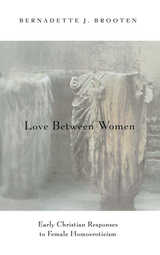 Love Between Women: Early Christian Responses to Female Homoeroticism
Bernadette J. Brooten
University of Chicago Press, 1996 Love Between Women examines female homoeroticism and the role of women in the ancient Roman world. Employing an unparalleled range of cultural sources, Brooten finds evidence of marriages between women and establishes that condemnations of female homoerotic practices were based on widespread awareness of love between women.
"An extraordinary accomplishment. . . . A definitive source for all future discussion of homoeroticism and the Bible."—Mary Rose D'Angelo, Harvard Gay & Lesbian Review
"[Brooten's] convincing analysis . . . not only profoundly reshapes our understanding of the past, but it should also shape the way in which that past, particularly the early Christian texts with their immense normative weight, will be used for the future."—Anne L. Clark, Journal of Lesbian Studies
"Love Between Women gives contemporary debates on sexuality a carefully delineated past. It boldly insists upon a different future, one informed by history but not tyrannized by it."—Susan Ackerman, Lambda Book Report
"Fascinating, provocative and lucid. . . . Brooten has made a fundamental contribution to women's and gender studies, gay and lesbian studies, and classics."—Elizabeth A. Castelli, Women's Review of Books
Winner of the Lambda Literary Award for Best Lesbian Studies Book, 1997
 Love Calls Us to the Things of This World: The Return to Belmont in The Merchant of Venice
Jeanne Heifetz
Harvard University Press, 1981 If The Merchant of Venice is in one sense the tragedy of the Outsider, it is also the comedy of the Insiders. This work scrutinizes the values of the Insiders as they are embodied in the joyous return to Belmont in the last act of the play. An analysis of the structure of the Belmont scenes, and of Shakespeare's use of his sources, contributes to the understanding of the real nature of the Christian world of Merchant and of the Christians who inhabit it. Conceived as a part of a larger study of the problem of gifts and giving in Shakespeare's plays, this work examines the various forms of giving in Merchant, seeking to discover whether the ideal of Charity exists in the play. Observing the tension the gift creates between spiritual ideals and physical desires, this essay considers whether Charity is among the values left outside the boundaries of Belmont.
Love Canal: and the Birth of the Environmental Health Movement
Lois Marie Gibbs
Island Press, 2010 Today, “Love Canal” is synonymous with the struggle for environmental health and justice. But in 1972, when Lois Gibbs moved there with her husband and new baby, it was simply a modest neighborhood in Niagara Falls, New York. How did this community become the poster child for toxic disasters? How did Gibbs and her neighbors start a national movement that continues to this day? What do their efforts teach us about current environmental health threats and how to prevent them? Love Canal is Gibbs’ original account of the landmark case, now updated with insights gained over three decades.
 Love, Death, and Exile: Poems Translated from Arabic
Translated by Bassam K. Frangieh
Georgetown University Press eTextbooks are now available through VitalSource.com! Called "a major innovator in his art form" by The New York Times, Baghdad-born poet Abdul Wahab Al-Bayati broke with over fifteen centuries of Arabic poetic tradition to write in free verse and became world famous in the process. Love, Death, and Exile: Poems Translated from Arabic is a rare, bilingual facing-page edition in both the original Arabic text and a highly praised English translation by Bassam K. Frangieh, containing selections from eight of Al-Bayati's books of poetry. Forced to spend much of his life in exile from his native Iraq, Al-Bayati created poetry that is not only revolutionary and political, but also steeped in mysticism and allusion, moving and full of longing. This collection is a superb introduction to Al-Bayati, Arabic language, and Arabic literature and culture as well. On Al-Bayati's death in 1999, The New York Times obituary quoted him as saying once that his many years of absence from his homeland had been a "tormenting experience" that had great impact on his poetry. "I always dream at night that I am in Iraq and hear its heart beating and smell its fragrance carried by the wind, especially after midnight when it's quiet."
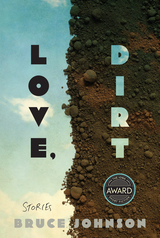 Love, Dirt
Bruce Johnson
University of Iowa Press, 2025 From the intimate confines of a Nebraska farmhouse to the bustling streets of South America, the characters of Love, Dirt traverse uneasy spaces in search of human connection. A closeted teen on a trip to Chile hides in his parents’ bedroom to avoid being caught fooling around with a local boy. An elderly couple attempts to scale a volcano, wrestling with their own physical limitations and an unbearable loss in their past. A father becomes convinced that a daycare has swapped his toddler with a near-identical imposter. The public relations industry of Las Vegas is at first amused and then scandalized by a businesswoman’s ability to divine people’s birthplaces and childhood experiences just by listening to them speak. And a son’s long-deceased parents return to life as fumbling, inept zombies who are more nuisance than threat. In these and other stories, Bruce Johnson’s bold, thought-provoking debut explores how we are shaped by the narratives that we craft for ourselves and others.
Love Enamored and Driven Mad
Lucrezia Marinella
Iter Press, 2020 With Love Enamored and Driven Mad, Lucrezia Marinella puts her mark on classical mythology and literary antecedents. She transforms Cupid from all-powerful god to wayward adolescent who falls to his own haughtiness while having female characters (such as Venus) take on distinctly positive roles. From the literary standpoint, she demonstrates her deep knowledge of classical and vernacular authors, from Ovid to Apuleius and Prudentius, and from Dante to Tasso, with numerous forays into Petrarchan poetics.
The Other Voice in Early Modern Europe - The Toronto Series, volume 72
 Love for Lydia: A Sardis Anniversary Volume Presented to Crawford H. Greenewalt, Jr.
Nicholas D. Cahill
Harvard University Press, 2008 This generously illustrated volume, honoring Crawford H. Greenewalt, Jr., field director of the Sardis Expedition for over thirty years, and commemorating the fiftieth anniversary of the Harvard–Cornell archaeological excavation, presents new studies by scholars closely involved with Professor Greenewalt’s excavations at this site in western Turkey. The essays span the Archaic to the Late Antique periods, focusing primarily on Sardis itself but also touching on other archaeological sites in the eastern Mediterranean. Three papers publish for the first time an Archaic painted tomb near Sardis with lavish interior furnishings. Papers on Sardis in late antiquity focus on domestic wall paintings, spolia used in the late Roman Synagogue, and late fifth-century coin hoards. Other Sardis papers examine the layout of the city from the Lydian to the Roman periods, the transformation of Sardis from an imperial capital to a Hellenistic polis, the reuse of pottery in the Lydian period, and the history and achievements of the conservation program at the site. Studies of an Archaic seal from Gordion, queenly patronage of Hellenistic rotundas, and ancient and modern approaches to architectural ornament round out the volume.
Love for Sale: And Other Essays
Clifford Thompson
Autumn House Press, 2013 In his first nonfiction collection, Thompson muses on different art forms and their relation to his own experiences as an African-American in the post-Civil Rights era.
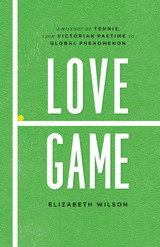 Love Game: A History of Tennis, from Victorian Pastime to Global Phenomenon
Elizabeth Wilson
University of Chicago Press, 2016 Tennis has never been played better than it is today. To watch Rafael Nadal spin a forehand at 4000 rpm, Maria Sharapova arabesque out of a serve, Serena Williams utterly destroy a short ball, or Roger Federer touch a volley into an impossibly angled winner is to watch not only the best players with the best coaching hitting with the best racquets, it is to watch the culmination of an entire history. Love Game is different from most tennis books—it isn’t a ghostwritten biography, and it won’t teach you how to slice your serve. It’s a book about tennis’s grand culture, one that unveils the sport’s long history as it lives and breathes (or grunts) in the modern game.
No one is better equipped to tell this story than novelist and historian Elizabeth Wilson. With a penchant for tennis’s inherent drama, she finds its core: a psychological face off between flamboyant personalities navigating the ebbs and flows of fortune in the confines of a 78 x 36–foot box—whether of clay, grass, or DecoTurf. Walking the finely kempt lawns of Victorian England, she shows how tennis’s early role as a social pastime that included both men and women—and thus, lots of sexual tension—set it apart from most other sports and their dominant masculine appeal. Even today, when power and endurance are more important than ever, tennis still demands that the body behave gracefully and with finesse. In this way, Wilson shows, tennis has retained the vibrant spectacle of human drama and beauty that have always made it special, not just to sports fans but to popular culture.
Telling the stories of all the greats, from the Renshaw brothers to Novak Djokovic, and of all the advances, from wooden racquets to network television schedules, Wilson offers a tennis book like no other, keeping the court square in our sights as history is illuminated around it.
 Love, H: The Letters of Helene Dorn and Hettie Jones
Hettie Jones
Duke University Press, 2016 "It works, we're in business, yeah Babe!" So begins this remarkable selection from a forty-year correspondence between two artists who survived their time as wives in the Beat bohemia of the 1960s and went on to successful artistic careers of their own.
From their first meeting in 1960, writer Hettie Jones—then married to LeRoi Jones (Amiri Baraka)—and painter and sculptor Helene Dorn (1927–2004), wife of poet Ed Dorn, found in each other more than friendship. They were each other's confidant, emotional support, and unflagging partner through difficulties, defeats, and victories, from surviving divorce and struggling as single mothers, to finding artistic success in their own right.
Revealing the intimacy of lifelong friends, these letters tell two stories from the shared point of view of women who refused to go along with society’s expectations. Jones frames her and Helene's story, adding details and explanations while filling in gaps in the narrative. As she writes, "we'd fled the norm for women then, because to live it would have been a kind of death."
Apart from these two personal stories, there are, as well, reports from the battlegrounds of women's rights and tenant's rights, reflections on marriage and motherhood, and contemplation of the past to which these two had remained irrevocably connected. Prominent figures such as Allen Ginsberg and Timothy Leary appear as well, making Love, H an important addition to literature on the Beats.
Above all, this book is a record of the changing lives of women artists as the twentieth century became the twenty-first, and what it has meant for women considering such a life today. It's worth a try, Jones and Dorn show us, offering their lives as proof that it can be done.
Love, hate and welfare: Pyschosocial approaches to policy and practice
Lynn Froggett
Bristol University Press, 2002 This book presents a psychosocial examination of the changing relationships between users of services, professionals and managers in the post-war welfare state. It:develops practice-based perspectives on changing social relations of care;discusses the psychic dimensions of entitlement, risk, responsibility, compassion and dependency in the welfare system;develops a grid to link the interpersonal, institutional and sociopolitical dimensions of successive post-war welfare settlements;explores the potential contribution of psychoanalytic concepts to social policy and practice. ·[vbTab][vbTab]This book is aimed at all those who have an interest in the development of responsive welfare institutions, including policy makers, professionals and academics.
 Love, Human and Divine: The Heart of Christian Ethics
Edward Collins Vacek, SJ
Georgetown University Press Although the two great commandments to love God and to love our neighbors as ourselves are central to Christianity, few theologians or spiritual writers have undertaken an extensive account of the meaning and forms of these loves. Most accounts, in fact, make love of God and love of self either impossible or immoral. Integrating these two commandments, Edward Vacek, SJ, develops an original account of love as the theological foundation for Christian ethics. Vacek criticizes common understandings of agape, eros, and philia, examining the arguments of Aquinas, Nygren, Outka, Rahner, Scheler, and other theologians and philosophers. He defines love as an emotional, affirmative participation in the beloved's real and ideal goodness, and he extends this definition to the love between God and self. Vacek proposes that the heart of Christian moral life is loving cooperation with God in a mutually perfecting friendship.
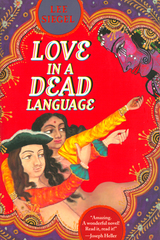 Love in a Dead Language
Lee Siegel
University of Chicago Press, 1999 Love in a Dead Language is a love story, a translation of an Indian sex manual, an erotic farce, and a murder mystery rolled into one. Enticing the reader to follow both victims and celebrants of romantic love on their hypertextual voyage of folly and lust-through movie posters, upside-down pages, the Kamasutra: Game of Love board game, and even a proposed CD-ROM, Love in a Dead Language exposes the complicities between the carnal and the intellectual, the erotic and the exotic and, in the end, is an outrageous operatic portrayal of romantic love.
"Rare is the book that makes one stop and wonder: Is this a literary masterpiece or do I need my head examined? But such is the alternately awe-inspiring and goofy thrall cast by Lee Siegel's Love in a Dead Language. . . . His work stands out as a book that is not simply a novel but its own genus of rollicking, narrative scholarship . . . it is just the cerebral aphrodisiac we need." —Carol Lloyd, Salon
"Immensely clever and libidinously hilarious. . . . [T]he most astonishing thing about Love in a Dead Language is its ingenious construction. Insofar as any printed volume can lay claim to being a multimedia work, this book earns that distinction." —Paul di Filippo, Washington Post Book World
"Now along comes Lee Siegel, who mixes a bit of Borges with some Nabokov and then adds an erotic gloss from the Kama Sutra to write Love in a Dead Language, a witty, bawdy, language-rich farce of academic life. . . . Whether it is post-modern or not, Love in a Dead Language is pulled off with such unhinged élan by Mr. Siegel that it is also plain good fun, a clever, literate satire in which almost everything is both travestied and, strangely, loved by its author." —Richard Bernstein, The New York Times
"Love in a Dead Language deserves space on the short, high shelf of literary wonders." —Tom LeClair, New York Times Book Review
1999 New York Times Book Review Notable Book of the Year
Love in a Global Village: A Celebration of Intercultural Families in the Midwest
Jessie Carroll Grearson
University of Iowa Press, 2000 In praise of diversity, Jessie Grearson and Lauren Smith offer Love in a Global Village: A Celebration of Intercultural Families in the Midwest, an account of the triumphs of fifteen intercultural families and the perseverance of their relationships in midwestern America. The couples recount their courtships, their adventures and difficulties, and their individual choices to create families and build lives together despite differences of race, language, religion, and culture. Welcomed into homes in towns like Kalona, Iowa, and Springfield, Missouri, Grearson and Smith introduce readers to unexpected fusions of culture in middle America. By focusing on small communities where intercultural relationships are exceptions rather than the norm, Smith and Grearson offer affirmation that multicultural households can endure and flourish almost anywhere.
 Love In A Time Of Hate
Hollander, Nancy Caro
Rutgers University Press, 1997 "First, we are going to kill all of the subversives; then their collaborators; then their sympathizers; then the indifferent; and finally, the timid". -- General Iberico Manuel Saint-Jean, governor of Buenos Aires province, 1977Nancy Caro Hollander profiles ten Argentine, Chilean, and Uruguayan psychologists and psychoanalysts who experienced firsthand, and later strove to comprehend, the crushing political and social oppression that occurred under the military dictatorships in these countries during the 1970s and 1980s.She recounts how psychoanalysts employed what she calls "liberation psychology" to understand the systematic exploitation suffered by the populace under fiercely repressive regimes and then to help themselves and others to confront and survive a culture of intimidation, coercion, and torture. As Hollander writes in the introduction, the men and women profiled "have striven to understand the interrelationship between alienated personal existence and social relations, between individual anomie and social oppression, and between individual mental health and collective empowerment".-- Introduction to liberation psychology, a new psychological methodology.-- Examination of psychological effects of state terror.
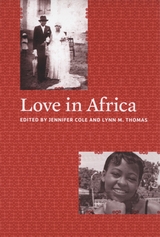 Love in Africa
Edited by Jennifer Cole and Lynn M. Thomas
University of Chicago Press, 2009 In recent years, scholarly interest in love has flourished. Historians have addressed the rise of romantic love and marriage in Europe and the United States, while anthropologists have explored the ways globalization has reshaped local ideas about those same topics. Yet, love in Africa has been peculiarly ignored, resulting in a serious lack of understanding about this vital element of social life—a glaring omission given the intense focus on sexuality in Africa in the wake of HIV/AIDS. Love in Africa seeks both to understand this failure to consider love and to begin to correct it. In a substantive introduction and eight essays that examine a variety of countries and range in time from the 1930s to the present, the contributors collectively argue for the importance of paying attention to the many different cultural and historical strands that constitute love in Africa. Covering such diverse topics as the reception of Bollywood movies in 1950s Zanzibar, the effects of a Mexican telenovela on young people’s ideas about courtship in Niger, the models of romance promoted by South African and Kenyan magazines, and the complex relationship between love and money in Madagascar and South Africa, Love in Africa is a vivid and compelling look at love’s role in African society.
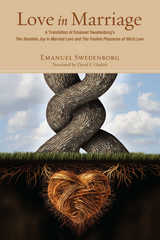 Love in Marriage
Emanuel Swedenborg
Swedenborg Foundation Publishers, 1992 Love in Marriage (also translated under the titles Marriage Love and Conjugial Love) is one of the most challenging works written by Swedish scientist and visionary Emanuel Swedenborg (1688–1772). It is not only about marriage as a social institution—both in the ways that it works and the ways that it can be a source of strife—but about the spiritual implications of marriage and the ways that two human beings can form, continue, and deepen their emotional and spiritual connection in this world and the next. While much of the commentary about marriage and romantic relationships is best understood in the context of eighteenth-century Swedish culture, the spiritual commentary sheds important light on the dualism that pervades Swedenborg’s theology and his stress on the importance of love for others. David Gladish’s contemporary translation, originally published in 1992, remains one of the most vibrant renditions of this work in the English language.
Love in the Age of War: Soldiers in Menander
Wilfred E. Major
Harvard University Press, 2022 Love in the Age of War explores soldier characters in Menander’s situation comedies, the oldest of their kind. Menander came to dominate and define comedy for centuries, and a soldier served as the central character in many of his plays. This study reveals that these soldier characters are not the bragging buffoons that later became the stereotype in this brand of comedy, but challenging and complex men who struggle to find a place in new families and in their local communities. In contrast to the traditional Greek stories of tragic warriors, these soldiers ultimately succeed in adjusting to civilian life.
Wilfred Major details how Menander dramatized these compelling stories, while later traditions instead turned these characters into clowns. Menander’s original soldiers, however, may be the ones whose stories resonate more powerfully today.
 Love in the Drug War: Selling Sex and Finding Jesus on the Mexico-US Border
By Sarah Luna
University of Texas Press, 2020 2020 — Ruth Benedict Prize – Association for Queer Anthropology, American Anthropological Association
2020 — Gloria E. Anzaldúa Book Prize – National Women’s Studies Association
2020 — Honorable Mention, Sara A. Whaley Book Prize
2021 — Best Book in Social Sciences – Mexico Section, Latin American Studies Association (LASA) Sex, drugs, religion, and love are potent combinations in la zona, a regulated prostitution zone in the city of Reynosa, across the border from Hidalgo, Texas. During the years 2008 and 2009, a time of intense drug violence, Sarah Luna met and built relationships with two kinds of migrants, women who moved from rural Mexico to Reynosa to become sex workers and American missionaries who moved from the United States to forge a fellowship with those workers. Luna examines the entanglements, both intimate and financial, that define their lives. Using the concept of obligar, she delves into the connections that tie sex workers to their families, their clients, their pimps, the missionaries, and the drug dealers—and to the guilt, power, and comfort of faith. Love in the Drug War scrutinizes not only la zona and the people who work to survive there, but also Reynosa itself—including the influences of the United States—adding nuance and new understanding to the current Mexico-US border crisis.
 Love in the Lav: A Social Biography of Same-Sex Desire in Ireland, 1922-1972
Averill Earls
Temple University Press, 2025 Love in the Lav uncovers Ireland’s queer lives of the past. Averill Earls investigates how same-sex-desiring men lived and loved in a country where their sexuality was illegal and seen as unnatural. Across seven social biographical chapters, each highlighting individuals at the nexus of these histories, Earls constructs a narrative of experiences through the larger contexts in which they are embedded.
Earls uses courtroom testimonies, police records, and family history archives as well as “educated speculation” to show how structures governing male same-sex desire in Ireland played out on the bodies of the men who desired men, the teen boys who sold sex to men, and the way the Catholic-nationalist ethos shaped the Gardaí who policed them.
Love in the Lav examines the experiences of people such as cabbie James Hand, who was put on trial for gross indecency, to provide a window into the queer working-class subculture of 1930s Dublin. Earls also focuses on issues of consent, especially with teens, and the unregulated queer Irish world of public figures, including Micheál Mac Liammóir, Hilton Edwards, Ronald Brown, and John Broderick.
By examining twentieth-century Ireland through the lived experiences of ordinary same-sex-desiring Irish men who were relegated to obscurity by Irish society, Earls reveals the contradictions, possibilities, and magnitude of postcolonial Irish Catholic nationalism.
In the series Sexuality Studies
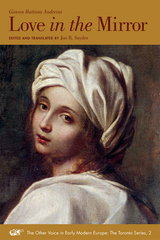 Love in the Mirror: A Bilingual Edition
Giovan Battista Andreini
Iter Press, 2009 Originally published in 1622, Love in the Mirror tells the unforgettable and path-breaking story of a passionate love affair between two women in early modern Florence. Despite the risk of social sanctions, Florinda and Lidia freely consent to love each other “breast to breast and mouth to mouth,” with some surprising consequences for the institution of marriage. This bilingual edition of the play introduces the English-speaking reader to one of the most remarkable creative artists of the Baroque age, Giovan Battista Andreini (1576–1654). Actor, playwright, and son of the first great diva of the European stage, Isabella Andreini, Giovan Battista was renowned in his lifetime as an avant-garde theatrical innovator. While drawing on the Italian commedia dell’arte, his comedies go far beyond its limits in order— like Calderón, Corneille and Shakespeare—to subvert traditional views of the relationship between art and life, representation and reality. Love in the Mirror, which was lost from view for centuries, is here translated for the first time into a highly accessible and fully annotated English version. The volume includes a wideranging introduction to this experimental comic masterpiece, as well as to the life and works of G.B. Andreini.
Love in Time: An Ethical Inquiry
Fannie Bialek
University of Chicago Press, 2025 A meditative reconsideration of what it means to love as ever-changing beings in an ever-changing world.
We live in time, and so we love in time. Our beloveds change, and we change beside them. Sometimes we change apart, but it is this very changeableness, the braving of an unknown future together, that endears us to our lovers. Far from an ideal of constancy and commitment, then, love is an endeavor fraught with uncertainty.
In this book, Fannie Bialek sketches a view of love that does not ignore the vagaries of life but embraces them. In contrast to philosophical and religious attempts to secure love against finitude, Bialek’s love embraces its susceptibility to change and accepts the ethical challenges such change introduces. Attentive to our deepest vulnerabilities, Bialek develops a fresh ethics of love grounded by our humility before time.
 Love Is My Favorite Flavor: A Midwestern Dining Critic Tells All
Wini Moranville
University of Iowa Press, 2024 In a remarkable career that has spanned nearly fifty years, Wini Moranville has witnessed the American restaurant landscape transform from the inside out. At just shy of fourteen, she began a ten-year stretch working in a kaleidoscope of quintessential midwestern eateries of the time. Moranville’s hands-on experiences weave a vivid tapestry of the American restaurant landscape in the 1970s and 1980s. In the mid-1990s, the tables turned as Moranville became a prolific food and wine writer for national publications, as well as the dining critic for the Des Moines Register and dsm Magazine.
Amidst the vast changes that have occurred over the years, Love Is My Favorite Flavor underscores the timelessness of what it is we seek when we entrust restaurateurs with our hard-earned money and our hard-won leisure time. Dining out may have changed dramatically since the 1970s, but the joys of being in the hands of people who care deeply about our time at their tables have not.
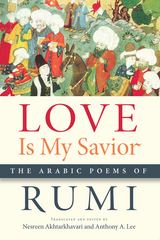 Love Is My Savior: The Arabic Poems of Rumi
Rumi
Michigan State University Press, 2016 This new volume of Rumi’s works, the first-ever English translation of his Arabic poems, will be exciting for the newcomer to Rumi’s verses as well as to readers already familiar with his mystical philosophy. The poems take the reader on a journey of spiritual exploration, ecstatic union, cruel rejection, and mystic reconciliation. Rumi reveals his soul and welcomes everyone to his spiritual feast.
This dual-language volume opens a treasury of Rumi’s mystic thought and startling poetry. His verses pulsate with desire and longing, with sensuality, and with ecstatic celebration. Rumi found in his mystic poetry a vehicle for the expression of the endless spiritual bounties of love. He placed love at the center of his faith and doctrine, and he pronounced it to be the goal of his life and the only form of true worship. This collection is stunningly rendered in English by an award-winning poet and a distinguished translator of Arabic poetry.
 Love Is Strong as Death: A Biography of Franz Rosenzweig
Paul Mendes-Flohr
University of Chicago Press, 2026 A brilliant and engaging biography of one of the great modern Jewish thinkers.
Franz Rosenzweig (1886–1929) was one of the central figures of the Jewish cultural and intellectual renaissance in Weimar Germany. His masterwork, The Star of Redemption (1921), is a classic of existential thought and Jewish philosophy, and his considerable legacy also includes his collaboration with Martin Buber on a key translation of the Hebrew Bible into German and the establishment of an education center in Frankfurt that brought together the most important young German-Jewish intellectuals of its time.
Rosenzweig’s personal biography is no less fascinating than his ideas and accomplishments. Drawing on unprecedented access to Rosenzweig’s unpublished personal correspondence, Paul Mendes-Flohr skillfully weaves together the threads of Rosenzweig’s life to give us a moving portrait of this towering figure—from his near-conversion to Christianity to his tragic diagnosis with ALS. Mendes-Flohr also closely explores Rosenzweig’s relationship with Margrit Huessy, who was a vital intellectual partner for Rosenzweig, as well as a muse and lover. He worked out many of his ideas about love both in conversation and consort with her, and Mendes-Flohr shows the importance of intimacy—both romantic and platonic—in the development of Rosenzweig’s thought.
Love Is Strong as Death provides a unique and insightful look at one of the most important modern Jewish thinkers.
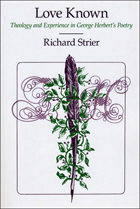 Love Known: Theology and Experience in George Herbert's Poetry
Richard Strier
University of Chicago Press, 1983 This book changes the way we read one of the greatest masters of the lyric poem in English. Unlike much recent scholarship on George Herbert, Love Known demonstrates the inseparability of Herbert's theology and poetry. Richard Strier argues persuasively for a strongly Protestant Herbert who shared Luther's sense of the primacy of the doctrine of justification by faith. Cutting across traditional lines, the book is the first sustained study of the theological basis of Herbert's poetry, pointing out connections between Herbert and the Protestant "left" of his own and the following era. In each chapter, Strier closely analyzes a coherent group of Herbert's lyrics to reveal the theological motives of their movements and design. When placed in a theological context, the poems come into focus in a remarkable way: many hitherto puzzling or unnoticed details are clarified, some neglected poems emerge into prominence, and familiar poems like "Love" (III) and "The Collar" take on new cogency. The chapters build on one another , moving from the darker implications of "faith alone," the insistence on the pervasiveness of sin and pride, to the comforting implications of the doctrine, the assertion of the possibility of freedom from anxiety, and the defense of individual experience. Love Known thus offers not only a new historical approach to Herbert, but a new appreciation of the relationship between the psychological realism and human appeal of the lyrics and their theological core.
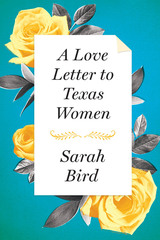 A Love Letter to Texas Women
By Sarah Bird
University of Texas Press, 2016 "Sarah Bird is a true eccentric, but one with a straightforward gift for explaining the human heart. . . . A Lone Star girl-legend." —Boston Globe What is it that distinguishes Texas women—the famous Yellow Rose and her descendants? Is it that combination of graciousness and grit that we revere in First Ladies Laura Bush and Lady Bird Johnson? The rapier-sharp wit that Ann Richards and Molly Ivins used to skewer the good ole boy establishment? The moral righteousness with which Barbara Jordan defended the US constitution? An unnatural fondness for Dr Pepper and queso? In her inimitable style, Sarah Bird pays tribute to the Texas Woman in all her glory and all her contradictions. She humorously recalls her own early bewildered attempts to understand Lone Star gals, from the big-haired, perfectly made-up ladies at the Hyde Park Beauty Salon to her intellectual, quinoa-eating roommates at Seneca House Co-op for Graduate Women. After decades of observing Texas women, Bird knows the species as few others do. A Love Letter to Texas Women is a must-have guide for newcomers to the state and the ideal gift to tell any Yellow Rose how special she is.
 A Love Letter to This Bridge Called My Back
Edited by gloria j. wilson, Joni B. Acuff, and Amelia M. Kraehe
University of Arizona Press, 2022 In 1981, Chicana feminist intellectuals Cherríe Moraga and Gloria Anzaldúa published what would become a touchstone work for generations of feminist women of color—the seminal This Bridge Called My Back: Writings by Radical Women of Color. To celebrate and honor this important work, editors gloria j. wilson, Joni B. Acuff, and Amelia M. Kraehe offer new generations A Love Letter to This Bridge Called My Back.
In A Love Letter, creators illuminate, question, and respond to current politics, progressive struggles, transformations, acts of resistance, and solidarity, while also offering readers a space for renewal and healing. The central theme of the original Bridge is honored, exposing the lived realities of women of color at the intersections of race, class, gender, ethnicity, and sexuality, advancing those early conversations on what it means to be Third World feminist conscious.
A Love Letter recognizes the challenges faced by women of color in a twenty-first-century world of climate and economic crises, increasing gun violence, and ever-changing social media constructs for women of color. It also retains the clarion call Bridge set in motion, as Moraga wrote: “A theory in the flesh means one where the physical realities of our lives—our skin color, the land or concrete we grew up on, our sexual longing—all fuse to create a politic born of necessity.”
Love Letter To Who Owns The Heavens
Corey Van Landingham
Tupelo Press, 2021 Love Letter to Who Owns the Heavens considers the way that the absence of touch—in acts of war via the drone, in acts of love via the sext, in aesthetics itself—abstracts the human body, transforming it into a proxy for the real.
“What love poem / could be written when men can no longer / look up?” this book asks, always in a state of flux between doubt and belief—in wars, in gods, in fathers, in love. Through epistolary addresses to these figures of power and others, these poems attempt to make bodies concrete and dangerous, immediate and addressable, once again.
Love Life
Oksana Lutsyshyna
Harvard University Press, 2024 Love Life, the second novel by the award-winning Ukrainian writer and poet Oksana Lutsyshyna, follows Yora, an immigrant to the United States from Ukraine. A delicate soul who is finely attuned to the nuances of human relations, Yora becomes enmeshed with Sebastian, a seductive acquaintance who suggests that they share a deep bond. But the relationship ends, sending her into a period of despair and grief. Full of mystic allusions, Love Life is a fascinating story of self-discovery amidst the complexities of adapting to a new life.
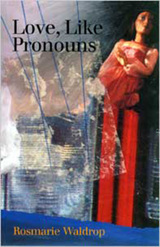 Love, Like Pronouns
Rosmarie Waldrop
Omnidawn, 2003 With the title of her latest collection, Love, Like Pronouns, Waldrop demonstrates with deft humor the relational aspects of any discourse. And, she implicitly suggests the similar slipperiness in human emotion and in human speech, as both the love object and the pronoun's referent easily shift with, even because of any attempt to articulate it. The title also subtly resonates with Waldrop's admiration for other writers, as well as demonstrates her awareness that each act of writing occurs in relation to—and within—the environment of other writings, past and present. In this collection, poem cycles dedicated to other writers echo with subtle synchronisms of that writer's forms, tones, textures. Yet from out of this synchronism, Waldrop evolves her own unique mediums of address. Each poem travels its own distinct and unrepeatable conduit between experience and language. Waldrop is an accomplished and applauded writer of poetry, fiction, essays and translation.
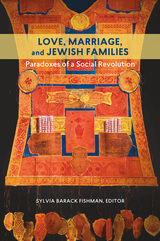 Love, Marriage, and Jewish Families: Paradoxes of a Social Revolution
Edited by Sylvia Barack Fishman
Brandeis University Press, 2015 The concepts of gender, love, and family—as well as the personal choices regarding gender-role construction, sexual and romantic liaisons, and family formation—have become more fluid under a society-wide softening of boundaries, hierarchies, and protocols. Sylvia Barack Fishman gathers the work of social historians and legal scholars who study transformations in the intimate realms of partnering and family construction among Jews. Following a substantive introduction, the volume casts a broad net. Chapters explore the current situation in both the United States and Israel, attending to what once were considered unconventional household arrangements—including extended singlehood, cohabitating couples, single Jewish mothers, and GLBTQ families—along with the legal ramifications and religious backlash. Together, these essays demonstrate how changes in the understanding of male and female roles and expectations over the past few decades have contributed to a social revolution with profound—and paradoxical—effects on partnering, marriage, and family formation. This diverse anthology—with chapters focusing on demography, ethnography, and legal texts—will interest scholars and students in Jewish studies, women’s and gender studies, Israel studies, and American Jewish history, sociology, and culture.
 Love, Money and Obligation: Transnational Marriage in a Northeastern Thai Village
Patcharin Lapanun
National University of Singapore Press, 2019 Globalization has opened up a flow of economic and cultural exchanges. While we often think about these concepts in terms of trade policies or international treaties, they also play out in more intimate spheres, such as transnational marriages.
Northeast Thailand has seen an increase in marriages between Thai women and farang (Western) men. Often the women are less well off and from rural areas in the country, while the men largely come from the United States and Europe and settle permanently in Thailand. These unions have created a new social class, with distinctive consumption patterns and lifestyles. And they are challenging gender relations and local perceptions of sexuality, marriage, and family.
In Love, Money and Obligation, Patcharin Lapanun offers an exploration of these marriages and their larger effect on Thai communities. Her interviews with women and men engaging in these transnational relationships highlight the complexities of the associations, as they are shaped by love, money, and gender obligations on the one hand and the dynamics of socio-cultural and historical contexts on the other. Her in-depth and even-handed examination highlights the importance of women’s agency and the strength and creativity of people seeking to forge meaningful lives in the processes of social transition and in the face of local and global encounters.
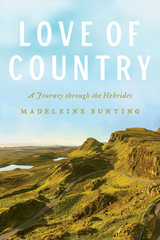 Love of Country: A Journey through the Hebrides
Madeleine Bunting
University of Chicago Press, 2017 Few landscapes are as striking as that of the Hebrides, the hundreds of small islands that speckle the waters off Scotland’s northwest coast. The jagged, rocky cliffs and roiling waves serve as a reminder of the islands’ dramatic geological history, inspiring awe and dread in those drawn there. With Britain at their back and facing the Atlantic, the Hebrides were at the center of ancient shipping routes and have a remarkable cultural history as well, as a meeting place for countless cultures that interacted with a long, rich Gaelic tradition.
After years of hearing about Scotland as a place deeply interwoven with the story of her family, Madeleine Bunting was driven to see for herself this place so symbolic and full of history. Most people travel in search of the unfamiliar, to leave behind the comfort of what’s known to explore some suitably far-flung corner of the globe. From the first pages, it’s clear that Madeleine Bunting’s Love of Country marks a different kind of journey—one where all paths lead to a closer understanding of home, but a home bigger than Bunting’s corner of Britain, the drizzly, busy streets of London with their scream of sirens and high-rise developments crowding the sky. Over six years, Bunting returned again and again to the Hebrides, fascinated by the question of what it means to belong there, a question that on these islands has been fraught with tenacious resistance and sometimes tragedy. With great sensitivity, she takes readers through the Hebrides’ history of dispossession and displacement, a history that can be understand only in the context of Britain’s imperial past, and she shows how the Hebrides have been repeatedly used to define and imagine Britain. In recent years, the relationship between Britain and Scotland has been subject to its most testing scrutiny, and Bunting’s travels became a way to reflect on what might be lost and what new possibilities might lie ahead.
For all who have wondered how it might feel to stand face-out at the edge of home, Love of Country is a revelatory journey through one of the world’s most remote, beautiful landscapes that encourages us to think of the many identities we wear as we walk our paths, and how it is possible to belong to many places while at the same time not wholly belonging to any.
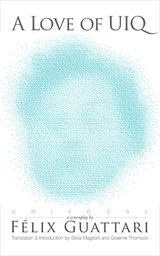 A Love of UIQ
Félix Guattari
University of Minnesota Press, 2016 Throughout a large part of the 1980s, Félix Guattari, known for his collaborations with Gilles Deleuze and his experimental and groundbreaking practices in psychotherapy, decides to shift his experimental work into a different medium of artistic and creative thought practice: the world of science fiction. Part self-analysis, part cinematic expression of his theoretical work, Guattari’s screenplay merges his theoretical concepts with his passion for comic books, free radio movements, and film. So begins Guattari’s journey to write a screenplay wherein a group of squatters makes contact with a superior intelligence coming from the infinitely small Universe of the Infra-quark (UIQ). Guattari worked feverishly on his film, attempting to secure a budget, traveling to Hollywood, and enlisting the help of American screenwriter Robert Kramer. But the film would never see the light of day. Through the important archival work of artists, Silvia Maglioni and Graeme Thomson, Guattari’s script is now published here, for the first time in English.
Love on the Streets: Selected and New Poems
Sharon Doubiago
University of Pittsburgh Press, 2008 Love on the Streets is a selection from two of Doubiago's book-length poems, Hard Country and South America Mi Hija and from the collections Psyche Drives the Coast and Body and Soul, plus new poems. Hard Country takes place in 1976, on a journey across the U.S. with a lover, climaxing on the lake where his mother drowned herself when he was ten. South America Mi Hija is a journey the poet made with her 15 year-old daughter to Colombia, Ecuador and Peru. Psyche Drives the Coast are poems written while Doubiago lived mainly on the road, and in diverse, passionate communities of poets from Mendocino to the Canadian border. Body and Soul was written while she was a resident of Oregon, and the new poems are written from her present home in San Francisco.
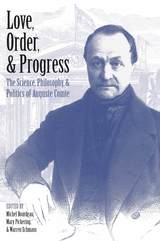 Love, Order, and Progress: The Science, Philosophy, and Politics of Auguste Comte
Michel Bourdeau, Mary Pickering, and Warren Schmaus
University of Pittsburgh Press, 2018 Auguste Comte's doctrine of positivism was both a philosophy of science and a political philosophy designed to organize a new, secular, stable society based on positive or scientific, ideas, rather than the theological dogmas and metaphysical speculations associated with the ancien regime. This volume offers the most comprehensive English-language overview of Auguste Comte's philosophy, the relation of his work to the sciences of his day, and the extensive, continuing impact of his thinking on philosophy and especially secular political movements in Europe, Latin America, and Asia. Contributors consider Comte’s reasons for establishing a Religion of Humanity as well as his views on domestic life and the arts in his positivist utopia. The volume further details Comte's attempt to apply his "positive method," first to social science and then to politics and morality, thereby defending the continuity of his career while also critically examining the limits of his approach.
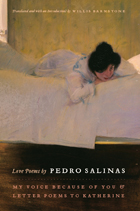 Love Poems by Pedro Salinas: My Voice Because of You and Letter Poems to Katherine
Pedro Salinas
University of Chicago Press, 2010 Now in paperback, a bilingual edition of one of the greatest sequences of love poems ever written.
When Pedro Salinas’s 1933 collection of love poems, La voz a ti debida, was introduced to American audiences in Willis Barnstone’s 1975 English translation, it was widely regarded as the greatest sequence of love poems written by a man or a woman, in any language, in the twentieth century. Now, seventy-five years after its publication, the reputation of the poems and its multifaceted writer remains untarnished. A portrait of their era, the poems, from a writer in exile from his native civil war-torn Spain, now reemerge in our time. In this new, facing-page bilingual edition, Barnstone has added thirty-six poems written in the form of letters from Salinas to his great love, Katherine Whitmore. Discovered years later, these poems were written during and after the composition of La voz and, though disguised as prose, have all the rhythms and sounds of lineated lyric poetry. Taken together, the poems and letters are a history, a dramatic monologue, and a crushing and inevitable ending to the story of a man consumed by his love and his art. Bolstered by an elegant foreword by Salinas’s contemporary, the poet Jorge Guillén, and a masterly afterword by the Salinas scholar, Enric Bou, that considers the poet and his legacy for twenty-first century world poetry, Love Poems by Pedro Salinas will be cause for celebration throughout the world of verse and beyond.
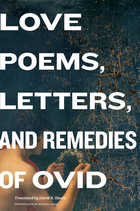 Love Poems, Letters, and Remedies of Ovid
Ovid
Harvard University Press, 2011 Widely praised for his recent translations of Boethius and Ariosto, David R. Slavitt returns to Ovid, once again bringing to the contemporary ear the spirited, idiomatic, audacious charms of this master poet.
The love described here is the anguished, ruinous kind, for which Ovid was among the first to find expression. In the Amores, he testifies to the male experience, and in the companion Heroides—through a series of dramatic monologues addressed to absent lovers—he imagines how love goes for women. “You think she is ardent with you? So was she ardent with him,” cries Oenone to Paris. Sappho, revisiting the forest where she lay with Phaon, sighs, “The place / without your presence is just another place. / You were what made it magic.” The Remedia Amoris sees love as a sickness, and offers curative advice: “The beginning is your best chance to resist”; “Try to avoid onions, / imported or domestic. And arugula is bad. / Whatever may incline your body to Venus / keep away from.” The voices of men and women produce a volley of extravagant laments over love’s inconstancy and confusions, as though elegance and vigor of expression might compensate for heartache.
Though these love poems come to us across millennia, Slavitt’s translations, introduced by Pulitzer Prize winner Michael Dirda, ensure that their sentiments have not faded with the passage of time. They delight us with their wit, even as we weep a little in recognition.
 Love Rules: Silent Hollywood And The Rise Of The Managerial Class
Mark Garrett Cooper
University of Minnesota Press, 2003 Traces the surprising connections between silent films and the rise of bureaucracy Arguing for a sweeping new consideration of the shift from print to cinema as a governing system for organizing modern American social relations, this book uncovers an intimate connection between Hollywood romances of the silent era and the empowerment of a managerial class. During the 1910s and 1920s, American movies told love stories through what rapidly became ubiquitous images. Again and again, silent features showed lovers separated by seeming happenstance and reunited as if by magical forces. Mark Garrett Cooper argues that this “magic” implies the expertise of the corporate movie studio with its hierarchies of professional experts. In other words, the Hollywood love story amounts to a managerial technique. Through close study of such films as Birth of a Nation, Enoch Arden, The Crowd, Why Change Your Wife? and The Jazz Singer, Love Rules shows how cinematic romance offers an object lesson in how to arrange American society—a lesson that implies that such work can be accomplished only by a managerial class. Love Rules offers a boldly original account of how the Hollywood feature film supplanted the “imagined community” of print culture and, in doing so, played a key role in the transformation of American mass culture.
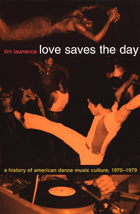 Love Saves the Day: A History of American Dance Music Culture, 1970-1979
Tim Lawrence
Duke University Press, 2003 Opening with David Mancuso's seminal “Love Saves the Day” Valentine's party, Tim Lawrence tells the definitive story of American dance music culture in the 1970s—from its subterranean roots in NoHo and Hell’s Kitchen to its gaudy blossoming in midtown Manhattan to its wildfire transmission through America’s suburbs and urban hotspots such as Chicago, Boston, San Francisco, Los Angeles, Newark, and Miami. Tales of nocturnal journeys, radical music making, and polymorphous sexuality flow through the arteries of Love Saves the Day like hot liquid vinyl. They are interspersed with a detailed examination of the era’s most powerful djs, the venues in which they played, and the records they loved to spin—as well as the labels, musicians, vocalists, producers, remixers, party promoters, journalists, and dance crowds that fueled dance music’s tireless engine. Love Saves the Day includes material from over three hundred original interviews with the scene's most influential players, including David Mancuso, Nicky Siano, Tom Moulton, Loleatta Holloway, Giorgio Moroder, Francis Grasso, Frankie Knuckles, and Earl Young. It incorporates more than twenty special dj discographies—listing the favorite records of the most important spinners of the disco decade—and a more general discography cataloging some six hundred releases. Love Saves the Day also contains a unique collection of more than seventy rare photos.
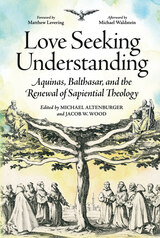 Love Seeking Understanding: Aquinas, Balthasar, and the Renewal of Sapiential Theology
Michael Altenburger
Catholic University of America Press, 2024 As Catholic theology emerged from the crisis of modernity, theologians turned to both patristic and medieval sources to recover lost wisdom from the theological tradition, and adapt it to the challenges of an age that separated reason from faith, the practice of theology from the spiritual life. . In time, Thomas Aquinas and Hans Urs von Balthasar became the patrons of two very different approaches to this challenge. St. Thomas Aquinas offering contemporary theologians an approach rooted in the patristic-medieval Latin synthesis of Augustine and Aristotle that also draws on the East, and von Balthasar offering contemporary theologians a patristic-modern approach rooted in the Eastern theological synthesis of Maximus the Confessor and Erich Przywara, that also draws on the West. Although Aquinas and Balthasar, together with their contemporary followers, sought to unite reason and faith, theology and prayer, contemporary Thomists and Balthasarians have tended to diverge widely from one another, often with a polemical spirit. How should one understand the theological genius of St. Thomas Aquinas and Hans Urs von Balthasar today? How can two of the greatest theologians in the Catholic tradition be brought together in more fruitful and peaceful dialogue?
This edited volume comprises contributions from a range of scholars who elucidate the depth and breadth of two of the most prominent figures of the Catholic tradition today. A scholar from each school of thought contributes an essay on a particular theme: Metaphysics, Trinity, Revelation, Christology, Anthropology, Evil, and Eschatology. By presenting the two essays side by side, this volume provides the contemporary reader with an opportunity to better engage both thinkers and understand disagreements and areas for constructive movement forward. The tone of the volume is intentionally irenic, seeking points of constructive dialogue, and opening new pathways to the renewal of sapiential theology through a fruitful synthesis of Thomistic and Balthasarian thought.
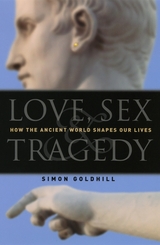 Love, Sex & Tragedy: How the Ancient World Shapes Our Lives
Simon Goldhill
University of Chicago Press, 2004 "If you do not know where you come from, you will always be a child." Cicero wasn't talking about being a child in the sense of enjoying life in a state of ignorant bliss. He was, rather, adamant that those who don't understand their origins are consigned to a life without power or authority, without the ability to act fully in the world. Love, Sex & Tragedy is acclaimed classicist Simon Goldhill's corrective to our state of ignorance. Lifting the veil on our inheritance of classical traditions, Goldhill offers a witty, engrossing survey of the Greek and Roman roots of everything from our overwhelming mania for "hard bodies" to our political systems.
Marx, Clark Gable, George W. Bush, Oscar Wilde, and Freud—Goldhill's range here is enormous, and he takes great delight in tracing both follies and fundamental philosophical questions through the centuries and continents to the birthplace of Western civilization as we know it. Underlying his brisk and learned excursions through history and art is the foundational belief, following Cicero, that learning about the classics makes a critical difference to our self-understanding. Whether we are considering the role of religion in contemporary society, our expectations about the boundaries between public and private life, or even how we spend our free time, recognizing the role of the classics is integral to our comprehension of modern life and our place in it.
When Goldhill asks "Who do you think you are?" he presents us with the rarest of opportunities: the chance to let him lead us, firmly but with a wink, back two thousand years to where we are.
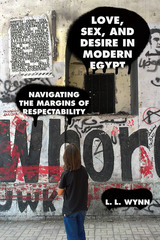 Love, Sex, and Desire in Modern Egypt: Navigating the Margins of Respectability
By L. L. Wynn
University of Texas Press, 2018 Cairo is a city obsessed with honor and respectability—and love affairs. Sara, a working-class woman, has an affair with a married man and becomes pregnant, only to be abandoned by him; Ayah and Zeid, a respectably engaged couple, argue over whether Ayah’s friend is a prostitute or a virgin; Malak, a European belly dancer who sometimes gets paid for sex, wants to be loved by a man who won’t treat her like a whore just because she’s a dancer; and Alia, a Christian banker who left her abusive husband, is the mistress of a wealthy Muslim man, Haroun, who encourages business by hosting risqué parties for other men and their mistresses. Set in transnational Cairo over two decades, Love, Sex, and Desire in Modern Egypt is an ethnography that explores female respectability, male honor, and Western theories and fantasies about Arab society. L. L. Wynn uses stories of love affairs to interrogate three areas of classic anthropological theory: mimesis, kinship, and gift. She develops a broad picture of how individuals love and desire within a cultural and political system that structures the possibilities of, and penalties for, going against sexual and gender norms. Wynn demonstrates that love is at once a moral horizon, an attribute that “naturally” inheres in particular social relations, a social phenomenon strengthened through cultural concepts of gift and kinship, and an emotion deeply felt and desired by individuals.
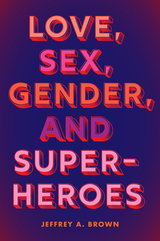 Love, Sex, Gender, and Superheroes
Jeffrey A. Brown
Rutgers University Press, 2022 Impossibly muscular men and voluptuous women parade around in revealing, skintight outfits, and their romantic and sexual entanglements are a key part of the ongoing drama. Such is the state of superhero comics and movies, a genre that has become one of our leading mythologies, conveying influential messages about gender, sexuality, and relationships.
Love, Sex, Gender, and Superheroes examines a full range of superhero media, from comics to films to television to merchandising. With a keen eye for the genre’s complex and internally contradictory mythology, comics scholar Jeffrey A. Brown considers its mixed messages. Superhero comics may reinforce sex roles with their litany of phallic musclemen and slinky femme fatales, but they also blur gender binaries with their emphasis on transformation and body swaps. Similarly, while most heroes have heterosexual love interests, the genre prioritizes homosocial bonding, and it both celebrates and condemns gendered and sexualized violence.
With examples spanning from the Golden Ages of DC and Marvel comics up to recent works like the TV series The Boys, this study provides a comprehensive look at how superhero media shapes our perceptions of love, sex, and gender.
Love Song for the Life of the Mind: An Essay on the Purpose of Comedy
Gene Fendt
Catholic University of America Press, 2007 Love Song for the Life of the Mind develops the view of comedy that, the author argues, would have been set out in Aristotle's missing second book of Poetics. As such it is both a philosophical and a historical argument about Aristotle; and the theory of comedy it elucidates is meant to be trans-historically and trans-culturally accurate.
Love Song to the Demon-Possessed Pigs of Gadara
William Fargason
University of Iowa Press, 2020 2020 Florida Book Award in Poetry, Gold Medal
In his debut collection, William Fargason inspects the pain of memory alongside the pain of the physical body. Fargason takes language to its limits to demonstrate how grief is given a voice. His speaker confronts illness, grapples with grief, and heals after loss in its most crushing forms. These poems attempt to make sense of trauma in a time of belligerent fathers and unacceptable answers. Fargason necessarily confronts toxic masculinity while navigating spiritual and emotional vulnerability.
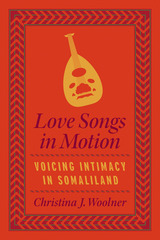 Love Songs in Motion: Voicing Intimacy in Somaliland
Christina J. Woolner
University of Chicago Press, 2023 An intimate account of everyday life in Somaliland, explored through an ever-evolving musical genre of love songs.
At first listen, both music and talk about love are conspicuously absent from Somaliland’s public soundscapes. The lingering effects of war, the contested place of music in Islam, and gendered norms of emotional expression limit opportunities for making music and sharing personal feelings. But while Christina J. Woolner was researching peacebuilding in Somaliland’s capital, Hargeysa, she kept hearing snippets of songs. Almost all of these, she learned, were about love. In these songs, poets, musicians, and singers collaborate to give voice to personal love aspirations and often painful experiences of love-suffering. Once in circulation, the intimate and heartfelt voices of love songs provide rare and deeply therapeutic opportunities for dareen-wadaag (feeling-sharing). In a region of political instability, these songs also work to powerfully unite listeners on the basis of shared vulnerability, transcending social and political divisions and opening space for a different kind of politics.
Taking us from 1950s recordings preserved on dusty cassettes to new releases on YouTube and live performances at Somaliland’s first postwar music venue—where the author herself eventually takes the stage—Woolner offers an account of love songs in motion that reveals the capacity of music to connect people and feelings across time and space, creating new possibilities for relating to oneself and others.
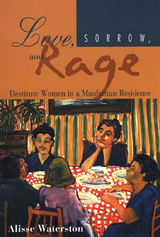 Love, Sorrow, And Rage
Alisse Waterston
Temple University Press, 1999 Love, Sorrow, and Rage gives powerful voice to women like Nora Gaines and Dixie Register, who tell use what it's like to live on the streets of New York, how it feels to lose your mind, about the taste of crack cocaine and the sweetness of friendship. In this novel-like narrative of homelessness and hope, poor women share a table, their meals, and their intimacies with author Alisse Waterston. On the pages of this impassioned ethnography, Waterston puts mythic, demonized bag ladies to rest, and in so doing, brings ordinary women to life.
From drug addiction and the spread of AIDS to the growing gap between rich and poor in the U.S., the topics in this book get front-page coverage in daily newspapers across the country. Waterston seeks to understand, to explain, and to solve the human crisis that surrounds us. Towards this end, she challenges us to look at the ways in which our society and the workings of our political, economic, and popular culture contribute to the suffering experienced by our most vulnerable citizens. An important corrective to popular depictions of the urban poor, Love, Sorrow, and Rage provides a penetrating analysis of the causes and consequences of poverty. It offers a deeper understanding of what leads to and perpetuates poverty and of the human complex of love, sorrow, and rage felt by those who experience it.
Love, Sorrow, and Rage will engage readers interested in urban studies, women's studies, social issues and policies, anthropology, sociology, political economy, and New York City life.
Love Stories: Sex between Men before Homosexuality
Jonathan Ned Katz
University of Chicago Press, 2001 In Love Stories, Jonathan Ned Katz presents stories of men's intimacies with men during the nineteenth century—including those of Abraham Lincoln—drawing flesh-and-blood portraits of intimate friendships and the ways in which men struggled to name, define, and defend their sexual feelings for one another. In a world before "gay" and "straight" referred to sexuality, men like Walt Whitman and John Addington Symonds created new ways to name and conceive of their erotic relationships with other men. Katz, diving into history through diaries, letters, newspapers, and poems, offers us a clearer picture than ever before of how men navigated the uncharted territory of male-male desire.
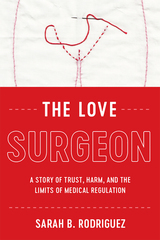 The Love Surgeon: A Story of Trust, Harm, and the Limits of Medical Regulation
Sarah B. Rodriguez
Rutgers University Press, 2020 Dr. James Burt believed women’s bodies were broken, and only he could fix them. In the 1950s, this Ohio OB-GYN developed what he called “love surgery,” a unique procedure he maintained enhanced the sexual responses of a new mother, transforming her into “a horny little house mouse.” Burt did so without first getting the consent of his patients. Yet he was allowed to practice for over thirty years, mutilating hundreds of women in the process.
It would be easy to dismiss Dr. Burt as a monstrous aberration, a modern-day Dr. Frankenstein. Yet as medical historian Sarah Rodriguez reveals, that’s not the whole story. The Love Surgeon asks tough questions about Burt’s heinous acts and what they reveal about the failures of the medical establishment: How was he able to perform an untested surgical procedure? Why wasn’t he obliged to get informed consent from his patients? And why did it take his peers so long to take action?
The Love Surgeon is both a medical horror story and a cautionary tale about the limits of professional self-regulation.
Love That Works: Art & Science Of Giving
Bruce Brander
Templeton Press, 2004 This original, highly readable book poses a clear distinction between our customary form of love, which almost guarantees failure, and higher, more generous ways of loving that can succeed and enrich both individuals and society as a whole. Love That Works draws on history, psychology, and the theology and science of love to offer a proposal on how to be successful in love and romance. It starts by showing why love fails to meet expectations, often ending sadly or even tragically.
Love Valley: An American Utopia
Conrad Ostwalt
University of Wisconsin Press, 1998 Love Valley is a small town in rural North Carolina. Its genesis in 1954 marked the fulfillment of a dream for founder Andy Barker. Barker cultivated two visions as a young man—he wanted to build a Christian community, and he wanted to be a cowboy. The result of his vision is Barker’s utopian experiment.
The town boasts a saloon, general store, hitching posts, and rodeos. Yet, above all of this stands a little church—the heart of what Barker conceived as his Christian utopia. This unique combination has led to more than forty years of philanthropic ventures, controversial events such as the Love Valley Rock Festival, stories and legends, and political ambition. Love Valley: An American Utopia captures the history of this town in narrative form while arguing that Love Valley’s founders were motivated by utopian goals.
 Love Writ Large
Navid Kermani
Seagull Books, 2018 Now in paperback, a story of teenage love in Cold War-era Germany.
For a fifteen-year-old, falling in love can eclipse everything else in the world, and make a few short weeks feel like a lifetime of experience. In Love Writ Large, Navid Kermani captures those intense feelings, from the emotional explosion of a first kiss to the staggering loss of a first breakup. As his teenage protagonist is wrapped up in these all-consuming feelings, however, Germany is in the crosshairs of the Cold War—and even the personal dramas of a small-town grammar school are shadowed by the threat of the nuclear arms race. Kermani’s novel manages to capture these social tensions without sacrificing any of the all-consuming passion of first love and, in a unique touch, sets the boy’s struggles within the larger frame of the stories and lives of numerous Arabic and Persian mystics. His becomes a timeless tale that reflects on the multiple ways love, loss, and risk weigh on our everyday lives.
 Lovefuries: The Contracting Sea; The Hanging Judge; Bite or Suck
David Ian Rabey
Intellect Books, 2008 David Ian Rabey is one of the most explosive, pioneering, and erotic playwrights ever to emerge from Wales. Lovefuries features three of his performance texts that flaut national and personal pressure to keep silent, committing instead to explore the shocking resurgences of life that break through grief. These plays tackle such issues as the nature of the feminine, surviving sexual abuse, and the boundaries of human language and physicality. This unforgettable collection will introduce American audiences to one of the most gifted contemporary playwrights working in Britain. Praise for David Ian Rabey “Stylish and stylistically challenging work. . . . A riveting and explosively physical performance.”—Irish Times “Breathtaking.”—Theatre in Wales “The struggle is fierce, suspenseful, and genuinely surprising in its outcome.”—Theatre in Wales “A gem of concise, meaningful new drama which deserves to be seen more widely as an illustration of the sort of theatre Wales is capable of producing.”—Gill Ogden, Aberystwyth Arts Centre
Lovely Asunder: Poems
Danielle Cadena Deulen
University of Arkansas Press, 2011 Danielle Cadena Deulen's debut collection, Lovely Asunder, is filled with beautiful dangers. These poems, sharp and graceful, brutal and vulnerable, create from language a kind of chiaroscuro-both light and dark made more vivid by their juxtaposition. Throughout the collection, the poet appraises ancient myths through a feminine and feminist perspective, evincing the ways in which narratives transform personal experience and vice versa. The figure of the fruit, in all its implied and literal lushness, recurs like a chorus, and the speakers of these poems are haunted by the Fall-confined by the body, the mind, and the irrevocable past.
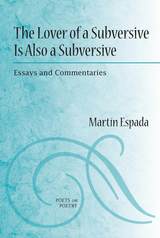 The Lover of a Subversive Is Also a Subversive: Essays and Commentaries
Martín Espada
University of Michigan Press, 2010 Prior praise for Martín Espada: "Political poetry at its finest…with his soaring lyrics, Espada broadens our appreciation not only of poetry but of resistance itself."
---The Progressive "(Espada) writes beautiful poems about terrible realities."
---San Francisco Chronicle A volume in the Poets on Poetry series, which collects critical works by contemporary poets, gathering together the articles, interviews, and book reviews by which they have articulated the poetics of a new generation. This collection of essays on poetry and politics comes from the man the New York Times predicted would become "the Latino poet of his generation" and whom Sandra Cisneros called "the Pablo Neruda of North American authors." Martín Espada defends what Walt Whitman called, "the rights of them the others are down upon." He invokes the spirit of poet-advocates such as Whitman and Edgar Lee Masters to explore his own history as a poet and tenant lawyer in Boston's Latino community. He celebrates the poets of Puerto Rico, imprisoned for espousing the cause of independence, and the poets of the Bronx, writing bilingual poems in the voices of the dead. Espada writes of forgotten places and reminds us of the poet's responsibility to remember, as Pablo Neruda remembers the anonymous builders of Machu Picchu or Sterling Brown remembers the slave uprising of Nat Turner. He argues that poets should embrace the role of Shelley's "unacknowledged legislator" in their work as writers and in their lives as citizens. He challenges the conventional wisdom that poetry and politics are mutually exclusive, and rejects the poetics of self-marginalization, in keeping with Adrian Mitchell's dictum that, "most people ignore most poetry because most poetry ignores most people." Martín Espada has published seventeen books as a poet, editor, and translator. The Republic of Poetry, a collection of poems, received a Paterson Award for Sustained Literary Achievement and was a finalist for the Pulitzer Prize. Imagine the Angels of Bread won an American Book Award and was a finalist for the National Book Critics Circle Award. He has received numerous fellowships and awards, including a Guggenheim Fellowship and the National Hispanic Cultural Center Literary Award. Espada is a Professor of English at the University of Massachusetts-Amherst.
 Lovers, Clowns, and Fairies: An Essay on Comedies
Stuart M. Tave
University of Chicago Press, 1993 Through dreams and shadows and strangeness, through blinding charms and eye-opening counter-charms, through moments of mortification and laughter—thus Stuart M. Tave traces the journey of the lovers, clowns, and fairies who populate comedies from A Midsummer Night's Dream to Waiting for Godot. Tave avoids the pitfalls of theory, taking instead a close look at particular works to give us a sense of the relations between certain dramas and novels that are called comedies. The result is a wonderfully readable book that renews our delight in the enchanting possibilities of literature.
A Midsummer Night's Dream, in its "perfection," is Tave's point of departure. Its characters fall neatly into the three groups of Tave's title and fulfill to perfection their functions of desire, foolishness, and power. From the magical concord of Shakespeare's resolution, Tave moves to works whose character face ever greater difficulties in reaching a happy conclusion. From Jonson and Austen to Chekhov and Beckett, he meets comedies on their own terms, illuminating the complex and individual genius of each. A masterpiece of practical criticism, Lovers, Clowns, and Fairies rediscovers the pleasure of reading comedies.
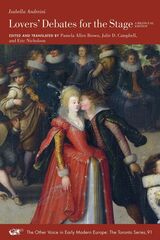 Lovers’ Debates for the Stage: A Bilingual Edition
Isabella Andreini
Iter Press, 2022 Witty and dynamic lovers’ dialogues for the stage.
The actress and author Isabella Andreini won international renown playing the bold, versatile, and intellectual inamorata of the commedia dell’arte. After her death, her husband Francesco Andreini continued publishing her works, among them the thirty-one amorosi contrasti—or lovers’ debates— presented in this volume. Available in English for the first time, Lovers' Debates enables readers to envision the commedia dell’arte through the words of its most revered diva. Lovers flirt boldly, trade bawdy insults, exhibit their learning, and drive each other mad in stage dialogues that showcase Isabella’s skill in composition and drama. Sparkling with wit and bursting with dynamic energy, these brilliant lovers’ dialogues for the stage hold strong appeal not only for specialists in early modern literature and women’s studies, but for enthusiasts, scholars, and practitioners of classic and contemporary theatre.
Lovers of Cinema: The First American Film Avant-Garde, 1919–1945
Jan-Christopher Horak
University of Wisconsin Press, 1998 Marshaling his broad cinematic and cultural knowledge, editor Jan-Christopher Horak has compiled in Lovers of Cinema a groundbreaking group of articles on this neglected film period. With one exception, all are original to this volume, and many are the first to treat comprehensively such early filmmakers as Mary Ellen Bute, Theodore Huff, and Douglass Crockwell.
Also included in the book is a listing of all American avant-garde films produced in the years before World War II as well as a bibliography of the most relevant criticism, literature, and news accounts.
 Lovers of the Soul, Lovers of the Body: Philosophical and Religious Perspectives in Late Antiquity
Svetla Slaveva-Griffin
Harvard University Press, 2022 The relationship between the soul and the body was a point of contentious debate among philosophers and theologians in late antiquity. Modern scholarship has inherited this legacy, but split the study of the relation of body and soul between the disciplines of philosophy and religion. Lovers of the Soul, Lovers of the Body integrates, with Plato and Aristotle in the background, philosophical and religious perspectives on the concepts of soul and body in the transformative period of the first six centuries CE, from Philo to Olympiodorus. The polyphonic—but not dissonant—philosophical and theological dialogue is recreated and rethought by an international group of leading experts and up-and-coming scholars in ancient philosophy, theology, and religion.
The synthetic approach of the volume presents the understanding of human psychology in late antiquity, without labels and borders. It invites both experts and enthusiasts to crisscross the pathways of philosophy and religion in pursuit of new crossroads and greater common ground.
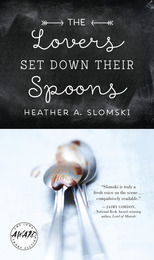 The Lovers Set Down Their Spoons
Heather A. Slomski
University of Iowa Press, 2014 Winner of the 2014 Iowa Short Fiction Award, Heather A. Slomski’s debut story collection takes loss as its primary subject and holds it up to the light. In prose spare and daring, poised yet startling, these stories take shape in reality, but reality, they sometimes show us, is not a separate realm from the fantastic or the surreal. Two couples meet for dinner to acknowledge an affair. A mannequin recalls a lover and the life she mysteriously lost. Two girls observe a young widow’s grief through a café window. A man’s hat is as discerning as Cinderella’s shoe.
In the fifteen stories that comprise this collection—some short as breaths, two of them novelettes—Slomski writes with a keen eye about relationships. About the desires that pull us together and the betrayals that push us apart. About jealousy, obsession, loneliness and regret—the byproducts of loving someone that keep us awake at night.
The characters in these stories share meals, drink wine, buy furniture and art. They live domestic lives, so often wanting to love someone yet ending up alone. In one story, a woman’s fiancé leaves her when she goes to post some mail. In another story, a man can’t move past an affair his wife almost had. Another story describes a series of drawings to detail a couple’s end. But while loss and heartache pervade these stories, there is also occasional hope. For, as the title story shows us, sometimes a breakup isn’t an end at all, but the beginning of your life.
Love's Answer
Michael Heffernan
University of Iowa Press, 1994 This is Michael Heffernan's fourth book of poetry, the work of a masterful and deeply intelligent practitioner at the height of his maturity. A pleasurable, wry, sweet book, full of prayers against the difficult passage of the night. Despite the surface demeanor, some of these poems seem to be rendered in a state of spiritual disquiet. There is also a powerful intellectual quarrel which Heffernan infuses in his work and through which he attempts to discover a sustaining metaphor rather than a rational conclusion.
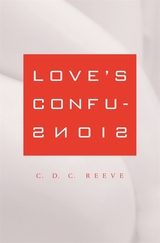 Love's Confusions
C. D. C. Reeve
Harvard University Press, 2005 Love's confusions are legion. We promise to love, but we cannot love at will. Love God, we're commanded, but we cannot love on command. And given the vicissitudes of self-love, even if we could love our neighbors as we love ourselves, would it be a good thing to do so? These are a few of the paradoxes that typically lead philosophers to oversimplify love--and that draw C. D. C. Reeve to explore it in all its complexity, searching for the lessons to be found within love's confusions.
Ranging from Plato, who wrote so eloquently on the subject, to writers as diverse as Shakespeare, Proust, Forster, Beckett, Huxley, Lawrence, and Larkin, Reeve brings the vast resources of Western literature and philosophy to bear on the question of love. As he explores the origins of Western thought on the subject, he also turns to the origins of individual experience--the relationship of mother and child, the template of all possible permutations of love--and to the views of such theorists as Freud, Melanie Klein, and Carol Gilligan. At the same time, he uses the story of the prototypical absent father, Odysseus, to demonstrate the importance of reconciling a desire for tenderness with a desire for strength if we are to make the most of love's potentials.
Looking at love in light of the classical world and Christianity, and in its complex relationship with pornography, violence, sadomasochism, fantasy, sentimentality, and jealousy, Reeve invites us to think more broadly about love, and to find the confusions that inevitably result to be creative rather than disturbing.
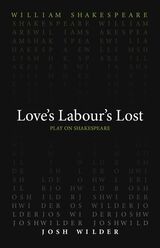 Love's Labour's Lost
William Shakespeare
Arizona Center for Medieval and Renaissance Studies, 2024 Shakespeare’s early comedy reimagined for modern audiences.
Love’s Labour’s Lost is a wacky comedy of disguise and mischief, following the King of Navarre and his companions as they attempt to swear off the company of women. Focusing on bringing new life into the musicality of Shakespeare’s language, Josh Wilder’s translation of Love’s Labour’s Lost brings out the play’s romp and sass for a contemporary audience.
This translation of Love’s Labour’s Lost was written as part of the Oregon Shakespeare Festival’s Play On! project, which commissioned new translations of thirty-nine Shakespeare plays. These translations present the work of “The Bard” in language accessible to modern audiences while never losing the beauty of Shakespeare’s verse. Enlisting the talents of a diverse group of contemporary playwrights, screenwriters, and dramaturges from diverse backgrounds, this project reenvisions Shakespeare for the twenty-first century. These volumes make these works available for the first time in print—a new First Folio for a new era.
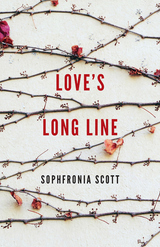 Love’s Long Line
Sophfronia Scott
Ohio State University Press, 2018
Sophfronia Scott turns an unflinching eye on her life to deliver a poignant collection of essays ruminating on faith, motherhood, race, and the search for meaningful connection in an increasingly disconnected world.
In Love’s Long Line, Scott contemplates what her son taught her about grief after the shootings at his school, Sandy Hook Elementary; how a walk with Lena Horne became a remembrance of love for Scott’s illiterate and difficult steelworker father; the unexpected heartache of being a substitute school bus driver; and the satisfying fantasy of paying off a mortgage. Scott’s road is also a spiritual journey ignited by an exploration of her first name, the wonder of her physical being, and coming to understand why her soul must dance like Saturday Night Fever’s Tony Manero.
Inspired by Annie Dillard’s observation in Holy the Firm that we all “reel out love’s long line alone . . . like a live wire loosed in space to longing and grief everlasting,” Scott’s essays acknowledge the loneliness, longing, and grief exacted by a fearless engagement with the everyday world. But she shows that by holding the line, there is an abundance of joy and forgiveness and grace to be had as well.
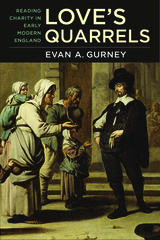 Love's Quarrels: Reading Charity in Early Modern England
Evan Gurney
University of Massachusetts Press, 2018 Early modern English writers often complained that “charity had grown cold,” lamenting the dissolution of society's communal bonds. But far from diminishing in scope or influence, charity generated heated debates, animated by social, political, and religious changes that prompted urgent questions about the virtue's powers and functions. Charity was as much a problem as it was a solution, a sure sign of trouble even when invoked on behalf of peace and community.
Love's Quarrels charts charity's complex history from the 1520s to the 1640s and details the ways in which it can be best understood in biblical translations of the early sixteenth century, in Elizabethan polemic and satire, and in the political and religious controversies arriving at the outset of civil war. As key works from Edmund Spenser, Ben Jonson, and John Milton reveal, “reading charity” was fraught with difficulty as early modern England reconsidered its deepest held convictions in the face of mounting social disruption and spiritual pressure.
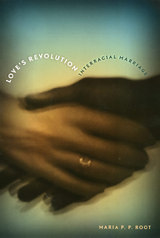 Love's Revolution: Interracial Marriage
Maria Root
Temple University Press, 2001 When the Baby Boom generation was in college, the last miscegenation laws were declared unconstitutional, but interracial romances retained an aura of taboo. Since 1960 the number of mixed race marriages has doubled every decade. Today, the trend toward intermarriage continues, and the growing presence of interracial couples in the media, on college campuses, in shopping malls and other public places, draws little notice.
Love's Revolution traces the social changes that account for the growth of intermarriage as well as the lingering prejudices and false beliefs that oppress racially mixed families. For this book, author Maria P. P. Root, a clinical psychologist, interviewed some 200 people from a wide spectrum of racial and ethnic backgrounds. Speaking out about their views and experiences, these partners, family members, and children of mixed race marriages confirm that the barriers are gradually eroding; but they also testify to the heartache caused by family opposition and disapproving strangers.
Root traces race prejudice to the various institutions that were structured to maintain white privilege, but the heart of the book is her analysis of what happens when people of different races decide to marry. Developing an analogy between families and types of businesses, she shows how both positive and negative reactions to such marriages are largely a matter of shared concepts of family rather than individual feelings about race. She probes into the identity issues that multiracial children confront an draws on her clinical experience to offer child-rearing recommendations for multiracial families. Root's "Bill of Rights for Racially Mixed People" is a document that at once empowers multiracial people and educates those who ominously ask, What about the children?
Love's Revolution paints an optimistic but not idealized picture of contemporary relationships. The "Ten Truths about Interracial Marriage" that close the book acknowledges that mixed race couples experience the same stresses as everyone else in addition to those arising from other people's prejudice or curiosity. Their divorce rates are only slightly higher than those of single race couples, which suggests that their success or failure at marriage is not necessarily a racial issue. And that is a revolutionary idea!
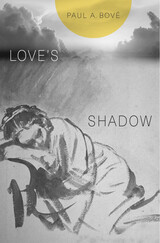 Love’s Shadow
Paul A. Bové
Harvard University Press, 2020 A case for literary critics and other humanists to stop wallowing in their aestheticized helplessness and instead turn to poetry, comedy, and love.
Literary criticism is an agent of despair, and its poster child is Walter Benjamin. Critics have spent decades stewing in his melancholy. What if, instead, we dared to love poetry, to choose comedy over Hamlet’s tragedy, or to pursue romance over Benjamin’s suicide on the edge of France, of Europe, and of civilization itself?
Paul A. Bové challenges young lit critters to throw away their shades and let the sun shine in. Love’s Shadow is his three-step manifesto for a new literary criticism that risks sentimentality and melodrama and eschews self-consciousness. The first step is to choose poetry. There has been since the time of Plato a battle between philosophy and poetry. Philosophy has championed misogyny, while poetry has championed women, like Shakespeare’s Rosalind. Philosophy is ever so stringent; try instead the sober cheerfulness of Wallace Stevens. Bové’s second step is to choose the essay. He praises Benjamin’s great friend and sometime antagonist Theodor Adorno, who gloried in writing essays, not dissertations and treatises. The third step is to choose love. If you want a Baroque hero, make that hero Rembrandt, who brought lovers to life in his paintings.
Putting aside passivity and cynicism would amount to a revolution in literary studies. Bové seeks nothing less, and he has a program for achieving it.
Love’s Story Told: A Life of Henry A. Murray
Forrest G. Robinson
Harvard University Press, 1992 Searching out the private man as well as the public figure, this elegantly written biography follows Henry Murray through his discoveries and triumphs as a pioneer in the field of clinical psychology, as a co-founder of Harvard’s Psychological Clinic, the co-inventor of the Thematic Apperception Test, and a biographer of Herman Melville. Murray’s fascination with Melville’s troubled genius, his wartime experiences in the O.S.S., and his close friendships with Lewis Mumford and Conrad Aiken all come to the fore in this masterly reconstruction of a life. And always, at the heart of this story, Robinson finds Murray’s highly erotic and mystical relationship with Christiana Morgan. Love’s Story Told penetrates to the heart of a brilliant figure in American intellectual life at mid-century, as he dives deeply into the unconscious, testing in work and love the limits of self-exploration.
Love's Sweet Return: The Harlequin Story
Margaret Ann Jensen
University of Wisconsin Press, 1984 Over one hundred twenty formula romance novels are churned out every month. These romantic fantasies for women are big business and earn huge profits for the companies that publish them.
Love’s $weet Return examines the phenomenon of romance fiction, focusing specifically on one of the most successful book publishers in the world, the Canadian-based Harlequin Enterprises. Margaret Jensen details the rise of the company, examines the Harlequin formula, and evaluates the growth and impact of both Harlequin and its competition. She also assesses recent shifts in the content of Harlequins, particularly as they pertain to women's changing roles in society.
Love/Stories (or, but you will get used to it): Five Short Plays
Itamar Moses
Northwestern University Press, 2010 A casting session for a play about a love affair goes awry. A talk-back with a theater audience becomes the occasion for a life-altering choice. A couple moving in together finds that greater intimacy can be a mixed blessing when even the surface of their dialogue is stripped away.
Metatheatrical antics abound in Itamar Moses’s Love/Stories (or, but you will get used to it), five one-act meditations on modern love and on the act of telling stories — in which a variety of inventive devices stresses the ineradicable gap between art and experience. Reminiscent of the works
of both Samuel Beckett and David Foster Wallace in their verbal dexterity, humor, and generosity, the plays collected in Love/Stories constitute an important addition to the contemporary American theater by one of our most exciting young playwrights.
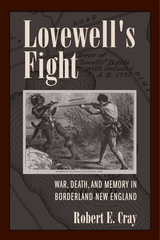 Lovewell's Fight: War, Death, and Memory in Borderland New England
Robert E. Cray
University of Massachusetts Press, 2014 In May 1725, during a three-year conflict between English colonists and the Eastern Abenaki Nation, a thirty-four-man expedition led by Captain John Lovewell set out to ambush their adversaries, acquire some scalp bounties, and hasten the end of the war. Instead, the Abenakis staged a surprise attack of their own at Pigwacket, Maine, that left more than a third of the New Englanders dead or severely wounded. Although Lovewell himself was slain in the fighting, he emerged a martyred hero, celebrated in popular memory for standing his ground against a superior enemy force.
In this book, Robert E. Cray revisits the clash known as "Lovewell's Fight" and uses it to illuminate the themes of war, death, and memory in early New England. He shows how a military operation plagued from the outset by poor decision-making, and further marred by less-than-heroic battlefield behavior, came to be remembered as early America's version of the Alamo. The government of Massachusetts bestowed payouts, pensions, and land on survivors and widows of the battle, while early chroniclers drafted a master narrative for later generations to emboss. William Henry Longfellow, Nathaniel Hawthorne, and Henry David Thoreau kept the story alive for later generations. Although some nineteenth-century New Englanders disapproved of Lovewell's notoriety as a scalp hunter, it did not prevent the dedication of a monument in his honor at the Fryeburg, Maine, battlesite in 1904.
Even as the actual story of "Lovewell's Fight" receded into obscurity—a bloody skirmish in a largely forgotten war—it remained part of New England lore, one of those rare military encounters in which defeat transcends an opponent's victory to assume the mantle of legend.
 Loving Animals: Toward a New Animal Advocacy
Kathy Rudy
University of Minnesota Press, 2013 The contemporary animal rights movement encompasses a wide range of sometimes-competing agendas from vegetarianism to animal liberation. For people for whom pets are family members—animal lovers outside the fray—extremist positions in which all human–animal interaction is suspect often discourage involvement in the movement to end cruelty to other beings. In Loving Animals, Kathy Rudy argues that in order to achieve such goals as ending animal testing and factory farming, activists need to be better attuned to the profound emotional, even spiritual, attachment that many people have with the animals in their lives. Offering an alternative to both the acceptance of animal exploitation and radical animal liberation, Rudy shows that a deeper understanding of the nature of our feelings for and about animals can redefine the human–animal relationship in a positive way. Through extended interviews with people whose lives are intertwined with animals, analysis of the cultural representation of animals, and engaging personal accounts, she explores five realms in which humans use animals: as pets, for food, in entertainment, in scientific research, and for clothing. In each case she presents new methods of animal advocacy to reach a more balanced and sustainable relationship association built on reciprocity and connection. Using this intense emotional bond as her foundation, Rudy suggests that the nearly universal stories we tell of living with and loving animals will both broaden the support for animal advocacy and inspire the societal changes that will improve the lives of animals—and humans—everywhere.
 Loving Arrangements: Stories About Modern Living and Loving
Nan Bauer-Maglin
Rutgers University Press, 2026 Doubting the “nature" of traditional family relations is timely, though unnerving for many. The 29 personal essays in Loving Arrangements explore the continuing processes of change and alteration in the understanding and experience of loving marital and non-marital relationships. It begins with challenges to the language associated with marriage and the couple, such as wife/husband and faithfulness/cheating, raising questions about romantic love and the exclusivity of the marital couple. It then explores living arrangements: people who are coupled but bring others into their relationship (sexual or nonsexual partners), couples who are together but live apart, couples who design alternative living arrangements and want to find connection outside in communes and co-housing. It then discusses alternative loving relationships: rejecting monogamy for additional simultaneous amorous relationships, equating friendships with romantic relationships, and dealing with gender transformations within relationships.
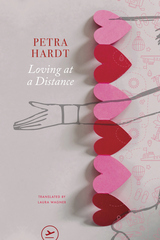 Loving at a Distance
Petra Hardt
Seagull Books, 2022 A poignant memoir about cultural differences told by an international rights veteran in the book publishing industry.
Traveling from the Silicon Valley through the college towns of Berkeley and Stanford, Loving at a Distance is a touching memoir that describes a European bibliophile’s experiences in the high-tech sectors of California. Living on two different continents is always a big challenge for a family. In a pandemic, however, that challenge becomes almost insurmountable.
An aging German grandmother, Petra Hardt finds that her regular journeys across the Atlantic to visit her children and grandchildren in California aren’t really helping her understand the Californian way of life and work. With self-irony and laconism, she details the connections and confusions between generations, exploring how different lifestyles and attitudes have affected her relationships. Her relatable experience of trying to bond with loved ones across distance is one shared by millions of other families around the world.
The personal impressions and observations are complemented by flashbacks to the author’s career in the international book trade. Why were the business trips to Beijing, Beirut, and Kolkata so easy to manage, while living in California is so hard? Showing us the world through Hardt’s grandmotherly eyes, Loving at a Distance is a tender and lively memoir about different ways of living and working in the age of globalism.
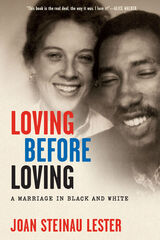 Loving before Loving: A Marriage in Black and White
Joan Steinau Lester
University of Wisconsin Press, 2021 Committed to the struggle for civil rights, in the late 1950s Joan Steinau marched and protested as a white ally and young woman coming to terms with her own racism. She fell in love and married a fellow activist, the Black writer Julius Lester, establishing a partnership that was long and multifaceted but not free of the politics of race and gender. As the women’s movement dawned, feminism helped Lester find her voice, her pansexuality, and the courage to be herself.
Braiding intellectual, personal, and political history, Lester tells the story of a writer and activist fighting for love and justice before, during, and after the Supreme Court’s 1967 decision striking down bans on interracial marriage in Loving v. Virginia. She describes her own shifts in consciousness, from an activist climbing police barricades by day and reading and writing late into the night to a woman navigating the coming-out process in midlife, before finding the publishing success she had dreamed of. Speaking candidly about every facet of her life, Lester illuminates her journey to fulfillment and healing.
 Loving Black Boys: A Black Feminist Bible on Racism and Revolutionary Mothering
Tamura Lomax
Duke University Press, 2026 Loving Black Boys is not just a love letter to Tamura Lomax’s own sons, but to all Black boys, men, fathers, and brothers. With understanding and urgency, Lomax writes honestly about Black endangerment and what it means to endure living in what James Baldwin called the “burning house” of white supremacist capitalist heteropatriarchal America. Seeing the full humanity of Black boys and men, and the liberation of all Black people, Lomax writes, requires a Black feminist lens. A companion piece to Freeing Black Girls, this book connects the everyday and extraordinary moments of Black mothering: phenomena as varied as “the talk” about police brutality, physical and emotional violence, Christian nationalism, miseducation, emotional health, sports, and more, which produce not only shared vulnerabilities but also tensions among Black folks. To her sons and to all Black men, Lomax insists that Black feminism, which emphasizes mutuality, protection, ethical autonomy, and healing, is vital to forging a safer future for individual and collective survival.
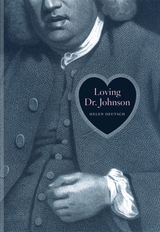 Loving Dr. Johnson
Helen Deutsch
University of Chicago Press, 2005 The autopsy of Samuel Johnson (1709-84) initiated two centuries of Johnsonian anatomy-both in medical speculation about his famously unruly body and in literary devotion to his anecdotal remains. Even today, Johnson is an enduring symbol of individuality, authority, masculinity, and Englishness, ultimately lending a style and a name—the Age of Johnson—to the eighteenth-century English literary canon.
Loving Dr. Johnson uses the enormous popularity of Johnson to understand a singular case of author love and to reflect upon what the love of authors has to do with the love of literature. Helen Deutsch's work is driven by several impulses, among them her affection for both Johnson's work and Boswell's biography of him, and her own distance from the largely male tradition of Johnsonian criticism—a tradition to which she remains indebted and to which Loving Dr. Johnson is ultimately an homage. Limning sharply Johnson's capacious oeuvre, Deutsch's study is also the first of its kind to examine the practices and rituals of Johnsonian societies around the world, wherein Johnson's literary work is now dwarfed by the figure of the writer himself.
An absorbing look at one iconic author and his afterlives, Loving Dr. Johnson will be of enormous value to students of English literature and literary scholars keenly interested in canon formation.
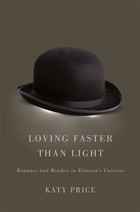 Loving Faster than Light: Romance and Readers in Einstein's Universe
Katy Price
University of Chicago Press, 2012 In November 1919, newspapers around the world alerted readers to a sensational new theory of the universe: Albert Einstein’s theory of relativity. Coming at a time of social, political, and economic upheaval, Einstein’s theory quickly became a rich cultural resource with many uses beyond physical theory. Media coverage of relativity in Britain took on qualities of pastiche and parody, as serious attempts to evaluate Einstein’s theory jostled with jokes and satires linking relativity to everything from railway budgets to religion. The image of a befuddled newspaper reader attempting to explain Einstein’s theory to his companions became a set piece in the popular press. Loving Faster than Light focuses on the popular reception of relativity in Britain, demonstrating how abstract science came to be entangled with class politics, new media technology, changing sex relations, crime, cricket, and cinematography in the British imagination during the 1920s. Blending literary analysis with insights from the history of science, Katy Price reveals how cultural meanings for Einstein’s relativity were negotiated in newspapers with differing political agendas, popular science magazines, pulp fiction adventure and romance stories, detective plots, and esoteric love poetry. Loving Faster than Light is an essential read for anyone interested in popular science, the intersection of science and literature, and the social and cultural history of physics.
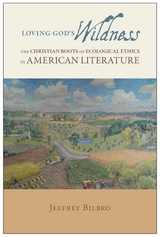 Loving God's Wildness: The Christian Roots of Ecological Ethics in American Literature
Jeffrey Bilbro
University of Alabama Press, 2015 When the Puritans arrived in the New World to carry out the colonization they saw as divinely mandated, they were confronted by the American wilderness. Part of their theology led them to view the natural environment as “a temple of God” in which they should glorify and serve its creator. The larger prevailing theological view, however, saw this vast continent as “the Devil’s Territories” needing to be conquered and cultivated for God’s Kingdom. These contradictory designations gave rise to an ambivalence regarding the character of this land and humanity’s proper relation to it.
Loving God’s Wildness rediscovers the environmental roots of America’s Puritan heritage. In tracing this history, Jeffrey Bilbro demonstrates how the dualistic Christianity that the Puritans brought to America led them to see the land as an empty wilderness that God would turn into a productive source of marketable commodities. Bilbro carefully explores the effect of this dichotomy in the nature writings of Henry David Thoreau, John Muir, Willa Cather, and Wendell Berry.
Thoreau, Muir, Cather, and Berry imaginatively developed the Puritan theological tradition to propose practical, physical means by which humans should live and worship within the natural temple of God’s creation. They reshaped Puritan dualism, each according to the particular needs of his or her own ecological and cultural contexts, into a theology that demands care for the entire created community. While differing in their approaches and respective ecological ethics, the four authors Bilbro examines all share the conviction that God remains active in creation and that humans ought to relinquish their selfish ends to participate in his wild ecology.
Loving God’s Wildness fills a critical gap in literary criticism and environmental studies by offering a sustained, detailed argument regarding how Christian theology has had a profound and enduring legacy in shaping the contours of the American ecological imagination. Literary critics, scholars of religion and environmental studies, and thoughtful Christians who are concerned about environmental issues will profit from this engaging new book.
 Loving Humanity, Learning, and Being Honored: The Foundations of Leadership in Xenophon's Education of Cyrus
Norman B. Sandridge
Harvard University Press, 2012 Xenophon is generally thought to have done his best theorizing on leadership through his portrayal of Cyrus the Great, the first king of the Persian Empire. In this book, Norman Sandridge argues that Xenophon actually reduces his Theory of Leadership to a set of fundamental traits, namely, the love of humanity, the love of learning, and the love of being honored. These so-called fundamental traits are the product of several rich contexts across culture and across time: the portrait of Cyrus seems as much a composite of Persian folklore as a pointed response to Plato’s Philosopher King. Sandridge further argues that Xenophon’s Theory of Leadership is effective for addressing many problems of leadership that were familiar to Xenophon and his fourth-century Athenian contemporaries, notably Plato and Isocrates. By looking at the contexts in which Xenophon’s theory was conceived, as well as the problems of leadership he sought to address, this book sees Xenophon as attempting a sincerely laudatory though not ideal portrait of Cyrus. The study thus falls between interpretations of the Education of Cyrus that have seen Cyrus as either a perfect leader or an ironically flawed one.
 Loving Lincoln: A Personal History of the Women Who Shaped Lincoln's Life and Legacy
Stacy Lynn
Southern Illinois University Press, 2025 Rediscovering Lincoln through the female gaze
Abraham Lincoln belongs to everybody. The women he interacted with helped forge the outstanding moral character of America's greatest president. This unique Abraham Lincoln biography features thirty historical and personal essays, and within them, the stories of more than ninety women, each with their own mini biographies in an appendix. Among them are Lincoln’s friends, clients, and extended family, as well as writers, artists, and—blurring the lines between history and memoir—author Stacy Lynn herself.
As a professional Lincoln scholar and editor, Lynn was often frustrated that male historians often overlooked Lincoln’s love for and friendship with women. Here, she posits a new paradigm—one that, instead of downplaying women, lifts up their interactions with Lincoln.
Lincoln understood the importance of the women in his life, and he put women’s wellbeing at the center of his personal, professional, and political ethos. He was loved by two strong pioneer mothers as well as sisters, friends, nieces, friends’ daughters, and his wife. He served women clients during his long legal career. As president, he met with women, dedicating time to hear their concerns despite the burdens of office. He replied to letters women wrote him. He believed in their capabilities and revolutionized the role of women in the workforce. After Lincoln’s death, women continued to shape his legacy. Mary Lincoln ensured his burial among friends, artist Vinnie Ream sculpted his statue in the US Capitol, and biographer Ida Tarbell provided a nuanced portrayal of his life. Harriet Monroe and Ruth Painter Randall further cemented his place in literature and history.
Lynn presents a fresh perspective on Lincoln, connecting his story to the stories of women and showcasing his kindness, sensitivity, and moral center. She explores how women shaped Lincoln’s inspirational legacy and pays homage to all the women who gave Lincoln to the world. Lynn’s unique blending of history, biography, and her own story reveals the ways in which an emotional connection to the historical figures one studies opens the door to richer human and historical understanding. By inviting readers to feel the past as well as read it, Lynn demonstrates that history matters most when it engages our minds and hearts.
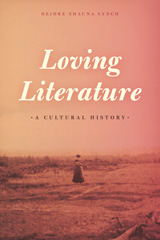 Loving Literature: A Cultural History
Deidre Shauna Lynch
University of Chicago Press, 2014 One of the most common—and wounding—misconceptions about literary scholars today is that they simply don’t love books. While those actually working in literary studies can easily refute this claim, such a response risks obscuring a more fundamental question: why should they?
That question led Deidre Shauna Lynch into the historical and cultural investigation of Loving Literature. How did it come to be that professional literary scholars are expected not just to study, but to love literature, and to inculcate that love in generations of students? What Lynch discovers is that books, and the attachments we form to them, have played a vital role in the formation of private life—that the love of literature, in other words, is deeply embedded in the history of literature. Yet at the same time, our love is neither self-evident nor ahistorical: our views of books as objects of affection have clear roots in eighteenth- and nineteenth-century publishing, reading habits, and domestic history.
While never denying the very real feelings that warm our relationship to books, Loving Literature nonetheless serves as a riposte to those who use the phrase “the love of literature” as if its meaning were transparent. Lynch writes, “It is as if those on the side of love of literature had forgotten what literary texts themselves say about love’s edginess and complexities.” With this masterly volume, Lynch restores those edges and allows us to revel in those complexities.
Loving Little Egypt: A Novel
Thomas McMahon
University of Chicago Press, 2003 In the early 1920s, nearly blind physics prodigy Mourly Vold finds out how to tap into the nation's long distance telephone lines. With the help of Alexander Graham Bell, Vold tries to warn the phone companies that would-be saboteurs could do the same thing, but they ignore him. Unfortunately, his taps do catch the notice of William Randolph Hearst, who hires Thomas Edison to get to the bottom of them—and the chase is on!
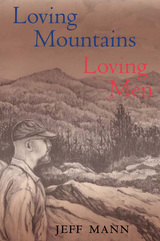 Loving Mountains, Loving Men: Memoirs of a Gay Appalachian
Jeff Mann
Ohio University Press, 2005 Loving Mountains, Loving Men is the first book-length treatment of a topic rarely discussed or examined: gay life in Appalachia. Appalachians are known for their love of place, yet many gays and lesbians from the mountains flee to urban areas. Jeff Mann tells the story of one who left and then returned, who insists on claiming and celebrating both regional and erotic identities. In memoir and poetry, Mann describes his life as an openly gay man who has remained true to his mountain roots. Mann recounts his upbringing in Hinton, a small town in southern West Virginia, as well as his realization of his homosexuality, his early encounters with homophobia, his coterie of supportive lesbian friends, and his initial attempts to escape his native region in hopes of finding a freer life in urban gay communities. Mann depicts his difficult search for a romantic relationship, the family members who have given him the strength to defy convention, his anger against religious intolerance and the violence of homophobia, and his love for the rich folk culture of the Highland South. His character and values shaped by the mountains, Mann has reconciled his homosexuality with both traditional definitions of Appalachian manhood and his own attachment to home and kin. Loving Mountains, Loving Men is a compelling, universal story of making peace with oneself and the wider world.
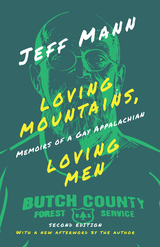 Loving Mountains, Loving Men: Memoirs of a Gay Appalachian
Jeff Mann
Ohio University Press, 2023 Second edition, with a new afterword A Gay man chronicles his relationship to his native Appalachian culture and society. Appalachians are known for their love of place, yet many LGBTQ+ people from the mountains flee to urban areas in search of community and broader acceptance. Jeff Mann tells his story as one who left and then returned, who insists on claiming and celebrating both regional and sexual identities. In memoir and poetry, Mann describes his life as an openly gay man who has remained true to his mountain roots. Mann recounts his upbringing in Hinton, a small town in southern West Virginia, as well as his realization of his homosexuality, his early encounters with homophobia, his coterie of supportive lesbian friends, and his initial attempts to escape his native region in hopes of finding a freer life in urban gay communities. Mann depicts his difficult search for a romantic relationship, the family members who have given him the strength to defy convention, his anger against religious intolerance and the violence of homophobia, and his love for the rich folk culture of the Highland South. His character and values shaped by the mountains, Mann has reconciled his sexuality with both traditional definitions of Appalachian manhood and his own attachment to home and kin. Loving Mountains, Loving Men is a compelling, universal story of making peace with oneself and the wider world.
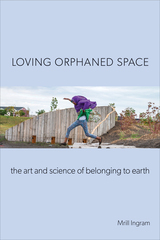 Loving Orphaned Space: The Art and Science of Belonging to Earth
Mrill Ingram
Temple University Press, 2022 How we relate to orphaned space matters. Voids, marginalia, empty spaces—from abandoned gas stations to polluted waterways—are created and maintained by politics, and often go unquestioned. In Loving Orphaned Space, Mrill Ingram provides a call to action to claim and to cherish these neglected spaces and make them a source of inspiration through art and/or remuneration. Ingram advocates not only for “urban greening” and “green planning,” but also for “radical caring.” These efforts create awareness and understanding of ecological connectivity and environmental justice issues—from the expropriation of land from tribal nations, to how race and class issues contribute to creating orphaned space. Case studies feature artists, scientists, and community collaborations in Chicago, New York, and Fargo, ND, where grounded and practical work of a fundamentally feminist nature challenges us to build networks of connection and care. The work of environmental artists who venture into and transform these disconnected sites of infrastructure allow us to rethink how to manage the enormous amount of existing overlooked and abused space. Loving Orphaned Space provides new ways humans can negotiate being better citizens of Earth.
Loving Rachel: A Family's Journey from Grief
Jane Bernstein
University of Illinois Press, 2007 In 1983, Jane Bernstein had everything she ever wanted: a healthy four-year-old daughter, Charlotte; a happy marriage; a highly praised first novel; and a brand new baby, Rachel. But by the time Rachel was six weeks old, a neuro-ophthalmologist told Jane and her husband that their baby was blind. Although there was some hope that Rachel might gain partial vision as she grew, her condition was one that often resulted in seizure disorders and intellectual impairment. So began a series of medical and emotional setbacks that were to plague Rachel and her parents and strain their marriage to the breaking point. Spanning the first four years of Rachel’s life, Loving Rachel is a heartbreaking chronicle of a marriage and a compelling story of parental love told with searing honesty and surprising humor.
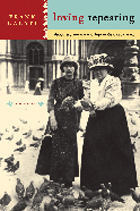 Loving Repeating: A Musical Adapted from the Writings of Gertrude Stein
Frank Galati
Northwestern University Press, 2009 Frank Galati's dramatic adaptation of Gertrude Stein's texts begins with Stein at age 60 as she is lecturing at the University of Chicago in 1934. She starts to speak about her writing, specifically her use of repetition, and to connect this idea with her own life experiences. A young Gertrude then appears to guide the audience through her memories of her life as a student, falling in love with Alice B. Toklas, their time together in France and Alice's account of Stein's final day. These vignettes, each culminating in a song (music by Stephen Flaherty), adeptly encapsulate the joy and passion of Stein's life and work, and the depth and complexity of a lesbian romance. Galati sheds new light on Stein's views on language, communication, and ideas by emphasizing how her art evolved from her fascination with the repetition of human behavior-as Stein sings to the audience "Loving repeating is one way of being."
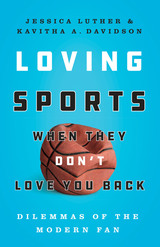 Loving Sports When They Don't Love You Back: Dilemmas of the Modern Fan
By Jessica Luther and Kavitha A. Davidson
University of Texas Press, 2020 Triumphant wins, gut-wrenching losses, last-second shots, underdogs, competition, and loyalty—it’s fun to be a fan. But when a football player takes a hit to the head after yet another study has warned of the dangers of CTE, or when a team whose mascot was born in an era of racism and bigotry takes the field, or when a relief pitcher accused of domestic violence saves the game, how is one to cheer? Welcome to the club for sports fans who care too much. In Loving Sports When They Don’t Love You Back, acclaimed sports writers Jessica Luther and Kavitha A. Davidson tackle the most pressing issues in sports, why they matter, and how we can do better. For the authors, “sticking to sports” is not an option—not when our taxes are paying for the stadiums, and college athletes aren’t getting paid at all. But simply quitting a favorite team won’t change corrupt and deplorable practices, and the root causes of many of these problems are endemic in our wider society. An essential read for modern fans, Loving Sports When They Don’t Love You Back challenges the status quo and explores how we might begin to reconcile our conscience with our fandom.
Loving the World Appropriately: Persuasion and the Transformation of Subjectivity
James L. Kastely
University of Chicago Press, 2022 A revolutionary approach to rhetoric that asks why audiences need persuading.
What is persuasion? For some, it is the ideal alternative to violence. For others, persuasion is simply a neutral instrumentality—a valued source of soft power. Both positions rest on a fundamental belief: persuasion is a power that resides in a speaker acting on an audience. Loving the World Appropriately asks a different, more fundamental, question: why does an audience need persuasion? In shifting our focus, James Kastely delivers a provocative new history of rhetoric and philosophy, one that describes rhetoric as more than a matter of effective communication and recasts persuasion as a philosophical concern central to notions of human subjectivity. Ultimately, Kastely insists, persuasion enables us to love the world appropriately.
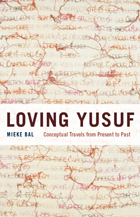 Loving Yusuf: Conceptual Travels from Present to Past
Mieke Bal
University of Chicago Press, 2008 When Mieke Bal reread the story of Joseph and Potiphar’s wife as an adult, she was struck by differences between her childhood memories of a moral tale and what she read today. In Loving Yusuf¸ Bal seeks to resolve this clash between memory and text, using the same story, in which Joseph spurns the advance of his master’s wife who then falsely accuses him of rape, as her point of departure. She juxtaposes the Genesis tale to the rather different version told in the Qur’an and the depictions of it by Rembrandt and explores how Thomas Mann’s great retelling in Joseph and His Brothers reworks these versions.
Through this inquiry she develops concepts for the analysis of texts that are both strange and overly familiar—culturally remote yet constantly retold. As she puts personal memories in dialogue with scholarly exegesis, Bal asks how all of these different versions complicate her own and others’ experience of the story, and how the different truths of these texts in their respective traditions illuminate the process of canonization.
Low Carbon Mobility for Future Cities: Principles and applications
Hussein Dia
The Institution of Engineering and Technology, 2017 Urban Transport energy efficiency and environmental sustainability continue to present big challenges for city leaders and policy think tanks. As the share of the world's population living in cities grows to nearly 70 per cent between now and 2050, urban transport energy consumption is forecast to double to meet the travel demand in the world's future cities. This urban growth will also dramatically change the scale and nature of our communities, and put a tremendous strain on the built environment and infrastructure that delivers vital services like transport.
 Low Electromagnetic Emission Wireless Network Technologies: 5G and beyond
Muhammad Ali Imran
The Institution of Engineering and Technology, 2020 Mobile communication systems rely on radiofrequency waves to operate. Given the popularity and ubiquity of mobile communication devices as well as network densification, the level of Electromagnetic Field (EMF) exposure to the public is expected to rise significantly over the next few years. Although there is no clear evidence linking short-term exposure to EMF emission from wireless communication systems with adverse health effects, the International Agency for Research on Cancer (IARC) has concluded that EMF radiation is possibly carcinogenic. To cope with the concerns of the general public, the European Environmental Agency has recommended non-technical precautionary approaches to minimize exposure to EMF emissions. Rather than relying on these non-technical approaches, EMF, latency, network resilience and connection density, alongside traditional criteria such as spectral efficiency and energy efficiency are expected to take centre stage in the development of 5G systems.
Low Power and Low Voltage Circuit Design with the FGMOS Transistor
Esther Rodriguez-Villegas
The Institution of Engineering and Technology, 2006 Motivated by consumer demand for smaller, more portable electronic devices that offer more features and operate for longer on their existing battery packs, cutting edge electronic circuits need to be ever more power efficient. For the circuit designer, this requires an understanding of the latest low voltage and low power (LV/LP) techniques, one of the most promising of which makes use of the floating gate MOS (FGMOS) transistor.
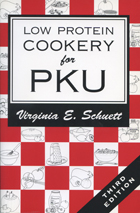 Low Protein Cookery for Phenylketonuria
Virginia E. Schuett
University of Wisconsin Press, 1997 Much more than a cookbook, Low Protein Cookery for Phenylketonuria (PKU) is a practical and easy-to-use guide for those who must maintain a protein-restricted diet for treatment of PKU or similar inherited diseases of protein metabolism. It contains hundreds of helpful suggestions for managing the diet. This third edition of Low Protein Cookery for PKU appears exactly twenty years after the original 1977 publication and includes the 450-plus recipes and the hints from the 1988 second edition that have been used and enjoyed by families for nearly a decade.
The major new feature of the third edition is entirely new nutrient calculations. The available food supply has changed significantly in the past fifteen years, and nutrient information is much better now. The nutrient calculations in this edition of the cookbook are based on the updated 1995 Low Protein Food List for PKU compiled by the author, which is the most widely used food list for the PKU diet in the United States. Some of the changes in nutrient values are subtle, others more significant; all reflect the best information currently available.
Low Protein Cookery for PKU offers recipes that appeal to a wide range of ages, suit a wide range of individual diet requirements, and facilitate integration of the diet into normal family eating routines. Many of the recipes are suitable for the entire family; others include instructions for adapting the recipe to suit the needs of family members not on the diet, or are accompanied by recipes for the preparation of similar non-diet items. The recipes provide gram weights when appropriate, for greater accuracy in preparing the recipes and in maintaining the diet.
 The Lowell Experiment: Public History in a Postindustrial City
Cathy Stanton
University of Massachusetts Press, 2006 In the early nineteenth century, Lowell, Massachusetts, was widely studied and emulated as a model for capitalist industrial development. One of the first cities in the United States to experience the ravages of deindustrialization, it was also among the first places in the world to turn to its own industrial and ethnic history as a tool for reinventing itself in the emerging postindustrial economy. The Lowell Experiment explores how history and culture have been used to remake Lowell and how historians have played a crucial yet ambiguous role in that process.
The book focuses on Lowell National Historical Park, the flagship project of Lowell's new cultural economy. When it was created in 1978, the park broke new ground with its sweeping reinterpretations of labor, immigrant, and women's history. It served as a test site for the ideas of practitioners in the new field of public history—a field that links the work of professionally trained historians with many different kinds of projects in the public realm.
The Lowell Experiment takes an anthropological approach to public history in Lowell, showing it as a complex cultural performance shaped by local memory, the imperatives of economic redevelopment, and tourist rituals—all serving to locate the park's audiences and workers more securely within a changing and uncertain new economy characterized by growing inequalities and new exclusions.
The paradoxical dual role of Lowell's public historians as both interpreters of and contributors to that new economy raises important questions about the challenges and limitations facing academically trained scholars in contemporary American culture. As a long-standing and well-known example of "culture-led re-development," Lowell offers an outstanding site for exploring questions of concern to those in the fields of public and urban history, urban planning, and tourism studies.
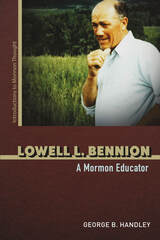 Lowell L. Bennion: A Mormon Educator
George B. Handley
University of Illinois Press, 2023 The intellectual and ethical achievements of the Latter-day Saint theologian Known in his lifetime for a tireless dedication to humanitarian causes, Lowell L. Bennion was also one of the most important theologians and ethicists to emerge in the Church of Jesus Christ of Latter-day Saints in the twentieth century. George B. Handley’s intellectual biography delves into Bennion’s thought and extraordinary intellectual life. Rejecting the idea that individual LDS practice might be at odds with lived experience, Bennion insisted the gospel favored the growth of individuals acting and living in the present. He also focused on the need for ongoing secular learning alongside religious practice and advocated for an idea of social morality that encouraged Latter-day Saints to seek out meaningful transformations of character and put their ethical commitments into practice. Handley examines Bennion’s work against the background of a changing institution that once welcomed his common-sense articulation of LDS ideas and values but became discomfited by how his thought cast doubt on the Church’s beliefs about race and other issues.
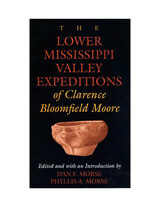 The Lower Mississippi Valley Expeditions of Clarence Bloomfield Moore
Clarence Bloomfield Moore
University of Alabama Press, 1998 A Dan Josselyn Memorial Publication C. B. Moore's investigations of the Lower Mississippi Valley are here collected in a one-volume facsimile edition. Like many other natural scientists from the Victorian era, Clarence Bloomfield Moore (1852-1917) lived several lives—adventurer, paper company executive, archaeologist; however, Moore is chiefly remembered for the twenty-five years he spent investigating and documenting archaeological sites along every navigable waterway in the southeastern United States. Moore's surveys were and are impressive, and he earned lasting respect from archaeological researchers in the South by publishing, mostly at his own expense, all of the data he recovered. This volume includes works that describe data from Moore's expeditions that were key to the early recognition and preservation of major archaeological sites—Toltec, Parkin, Mound City, and Wicklife, among them—in the lower Mississippi River Valley. This and companion volumes stand today as the defining database for every area in which he worked.
 The Lower Paleolithic Site at Hoxne, England
Ronald Singer, Bruce G. Gladfelter, and John J. Wymer
University of Chicago Press, 1993 At the edge of the small Suffolk village of Hoxne lies what
is arguably the single most important Middle Pleistocene
archaeological site in Europe. Here the deposits contain not
only prehistoric artifacts but also extraordinary records of
fossil flora and fauna, making Hoxne one of the few
paleolithic sites where early hominid materials can be found
with other types of information in their primary contexts.
Much controversy has surrounded the interpretation of
these prehistoric materials and their stratigraphic position
since John Frere published the first account of the site in
1797. Seeking to resolve some of the disputes, a team from
the University of Chicago began in 1971 the most extensive
series of excavations yet undertaken. This profusely
illustrated volume presents the results of the team's five
summers of excavations, which ended in 1978, and includes
contributions by twelve specialists who represent many
branches of Quaternary science. Although some uncertainty
remains on various minor questions, this will stand for many
years to come as the definitive study of Hoxne's
archaeological and geochronological significance.
Ronald Singer is the Robert R. Bensley Professor in the
Departments of Anatomy and Anthropology at the University of
Chicago. Bruce G. Gladfelter is associate professor in the
Department of Geography at the University of Illinois at
Chicago. John Wymer, a self-employed archaeologist, has been
a field officer with the Norfolk Archaeological Unit and the
Essex Archaeological Unit.
The Lowercase Jew
Rodger Kamenetz
Northwestern University Press, 2003 As dismissal and disdain of Jews speak through the art of some leading twentieth-century poets, so the poetry of Rodger Kamenetz artfully answers, framing in subtle terms the questions that haunt our culture-about the voices through which culture speaks, about the identity of poet and poetry, about the capacity of art to harm and to heal. Whether subjecting the anti-Semitic verses of T. S. Eliot to a literary trial; conjuring the eloquence with which "Allen Ginsberg forgives Ezra Pound on Behalf of the Jews"; or drawing upon personal history, the Torah, and Jewish mysticism to explore the tangled relations of Jewish identity and modern literature, Kamenetz's poems attest to the inexorable power of language.
Lowering the Bar: Lawyer Jokes and Legal Culture
Marc Galanter
University of Wisconsin Press, 2006 What do you call 600 lawyers at the bottom of the sea? Marc Galanter calls it an opportunity to investigate the meanings of a rich and time-honored genre of American humor: lawyer jokes. Lowering the Bar analyzes hundreds of jokes from Mark Twain classics to contemporary anecdotes about Dan Quayle, Johnnie Cochran, and Kenneth Starr. Drawing on representations of law and lawyers in the mass media, political discourse, and public opinion surveys, Galanter finds that the increasing reliance on law has coexisted uneasily with anxiety about the “legalization” of society. Informative and always entertaining, his book explores the tensions between Americans’ deep-seated belief in the law and their ambivalence about lawyers.
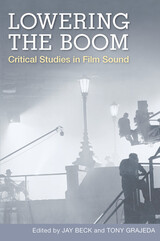 Lowering the Boom: Critical Studies in Film Sound
Edited by Jay Beck and Tony Grajeda
University of Illinois Press, 2007 As the first collection of new work on sound and cinema in over a decade, Lowering the Boom addresses the expanding field of film sound theory and its significance in rethinking historical models of film analysis. The contributors consider the ways in which musical expression, scoring, voice-over narration, and ambient noise affect identity formation and subjectivity. Lowering the Boom also analyzes how shifting modulation of the spoken word in cinema results in variations in audience interpretation. Introducing new methods of thinking about the interaction of sound and music in films, this volume also details avant-garde film sound, which is characterized by a distinct break from the narratively based sound practices of mainstream cinema. This interdisciplinary, global approach to the theory and history of film sound opens the eyes and ears of film scholars, practitioners, and students to film's true audio-visual nature. Contributors are Jay Beck, John Belton, Clark Farmer, Paul Grainge, Tony Grajeda, David T. Johnson, Anahid Kassabian, David Laderman, James Lastra, Arnt Maasø, Matthew Malsky, Barry Mauer, Robert Miklitsch, Nancy Newman, Melissa Ragona, Petr Szczepanik, Paul Théberge, and Debra White-Stanley.
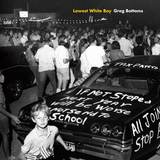 Lowest White Boy
Greg Bottoms
West Virginia University Press, 2019 An innovative, hybrid work of literary nonfiction, Lowest White Boy takes its title from Lyndon Johnson’s observation during the civil rights era: “If you can convince the lowest white man he’s better than the best colored man, he won’t notice you’re picking his pocket.” Greg Bottoms writes about growing up white and working class in Tidewater, Virginia, during school desegregation in the 1970s. He offers brief stories that accumulate to reveal the everyday experience of living inside complex, systematic racism that is often invisible to economically and politically disenfranchised white southerners—people who have benefitted from racism in material ways while being damaged by it, he suggests, psychologically and spiritually. Placing personal memories against a backdrop of documentary photography, social history, and cultural critique, Lowest White Boy explores normalized racial animus and reactionary white identity politics, particularly as these are collected and processed in the mind of a child.
The Lowland Maya Postclassic
Edited by Arlen F. Chase and Prudence M. Rice
University of Texas Press, 1985 This collection represents a major step forward in understanding the era from the end of Classic Maya civilization to the Spanish conquest.
Low-power HF Microelectronics: A unified approach
Gerson A.S. Machado
The Institution of Engineering and Technology, 1996 This book presents a thorough and integrated treatment of key topics in the field of low-voltage, low-power, mixed-mode design for the manufacture of low-cost, high-performance, robust integrated circuits. It brings together innovative modelling, simulation and design techniques in CMOS, SOI, GaAs and BJT, optimally combining process, device and design knowledge of low-voltage, high-frequency systems, including smart sensors.
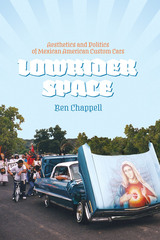 Lowrider Space: Aesthetics and Politics of Mexican American Custom Cars
By Ben Chappell
University of Texas Press, 2012 Aren’t lowriders always gangbangers? And, don’t they always hold high status in their neighborhoods? Contrary to both stereotypes, the people who build and drive lowrider cars perform diverse roles while mobilizing a distinctive aesthetic that is sometimes an act of resistance and sometimes of belonging. A fresh application of critical ethnographic methods, Lowrider Space looks beyond media portrayals, high-profile show cars, and famous cruising scenes to bring readers a realistic tour of the “ordinary” lowriders who turn streetscapes into stages on which dynamic identities can be performed.Drawing on firsthand participation in everyday practices of car clubs and cruising in Austin, Texas, Ben Chappell challenges histories of erasure, containment, and class immobility to emphasize the politics of presence evidenced in lowrider custom car style. Sketching out a partially personal map of the lowrider presence in Texas’s capital city, Chappell also explores the interior and exterior adornment of the cars (including the use of images of women’s bodies) and the intersecting production of personal and social space. As he moves through a second-hand economy to procure parts necessary for his own lowrider vehicle, on “service sector” wages, themes of materiality and physical labor intersect with questions of identity, ultimately demonstrating how spaces get made in the process of customizing one’s self.
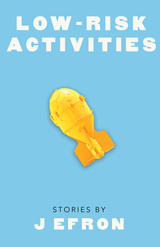 Low-Risk Activities: Stories
J Efron
University of Alabama Press, 2025 Formally daring and emotionally disarming, Low-Risk Activities spins out twenty-two uncanny stories that feel like dispatches from a future already here—and already unraveling. J Efron’s Low-Risk Activities is a genre-defying collection that slips between interview transcript, personal confession, government form, and speculative fable—told through the voices of orphans, immortals, office workers, digital nomads, and posthuman survivors. These are characters in limbo, each trying to make sense of a fractured world where logic doesn’t always follow law. The book opens with Lan Caihe, a faux-memoir in which a gender-fluid, possibly immortal narrator navigates trauma, desire, and the politics of being unclassifiable—part myth, part autofiction, and entirely singular. Later entries mimic psychological evaluations, immigration interrogations, and philosophical questionnaires, inviting the reader not just to observe, but to participate. Structured like a psychic excavation, Low-Risk Activities questions how we define personhood, how language shapes identity, and how systems reduce people to data—only to lose the meaning of what that data once held. Efron’s voice is intimate yet disorienting, full of humor, dread, and lyrical estrangement. Fans of Anne Carson, Jenny Boully, and Rivka Galchen will find familiar resonance in this work that refuses to resolve neatly—and in doing so, reveals something startlingly true.
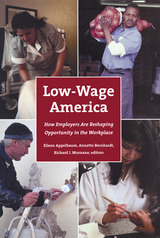 Low-Wage America: How Employers Are Reshaping Opportunity in the Workplace
Eileen Appelbaum
Russell Sage Foundation, 2003 About 27.5 million Americans—nearly 24 percent of the labor force—earn less than $8.70 an hour, not enough to keep a family of four out of poverty, even working full-time year-round. Job ladders for these workers have been dismantled, limiting their ability to get ahead in today's labor market. Low-Wage America is the most extensive study to date of how the choices employers make in response to economic globalization, industry deregulation, and advances in information technology affect the lives of tens of millions of workers at the bottom of the wage distribution. Based on data from hundreds of establishments in twenty-five industries—including manufacturing, telecommunications, hospitality, and health care—the case studies document how firms' responses to economic restructuring often results in harsh working conditions, reduced benefits, and fewer opportunities for advancement. For instance, increased pressure for profits in newly consolidated hotel chains has led to cost-cutting strategies such as requiring maids to increase the number of rooms they clean by 50 percent. Technological changes in the organization of call centers—the ultimate "disposable workplace"—have led to monitoring of operators' work performance, and eroded job ladders. Other chapters show how the temporary staffing industry has provided paths to better work for some, but to dead end jobs for many others; how new technology has reorganized work in the back offices of banks, raising skill requirements for workers; and how increased competition from abroad has forced U.S. manufacturers to cut costs by reducing wages and speeding production. Although employers' responses to economic pressures have had a generally negative effect on frontline workers, some employers manage to resist this trend and still compete successfully. The benefits to workers of multi-employer training consortia and the continuing relevance of unions offer important clues about what public policy can do to support the job prospects of this vast, but largely overlooked segment of the American workforce. Low-Wage America challenges us to a national self-examination about the nature of low-wage work in this country and asks whether we are willing to tolerate the profound social and economic consequences entailed by these jobs. A Volume in the Russell Sage Foundation Case Studies of Job Quality in Advanced Economies
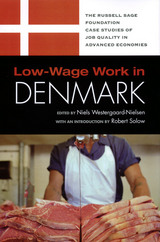 Low-Wage Work in Denmark
Niels Westergaard-Nielsen
Russell Sage Foundation, 2008 The Danish economy offers a dose of American labor market flexibility inside a European welfare state. The Danish government allows employers a relatively high level of freedom to dismiss workers, but also provides generous unemployment insurance. Widespread union coverage and an active system of collective bargaining help regulate working conditions in the absence of strong government regulation. Denmark's rate of low-wage work—8.5 percent—is the lowest of the five countries under analysis. In Low-Wage Work in Denmark, a team of Danish researchers combines comprehensive national registry data with detailed case studies of five industries to explore why low-end jobs are so different in Denmark. Some jobs that are low-paying in the United States, including hotel maids and meat processors, though still demanding, are much more highly compensated in Denmark. And Danes, unlike American workers, do not stay in low-wage jobs for long. Many go on to higher paying jobs, while a significant minority ends up relying temporarily on income support and benefits sustained by one of the highest tax rates in the world. Low-Wage Work in Denmark provides an insightful look at the particularities of the Danish labor market and the lessons it holds for both the United States and the rest of Europe. A Volume in the Russell Sage Foundation Case Studies of Job Quality in Advanced Economies
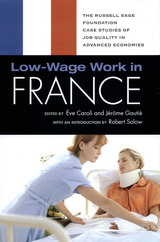 Low-Wage Work in France
Eve Caroli
Russell Sage Foundation, 2008 In France, low wages have historically inspired tremendous political controversy. The social and political issues at stake center on integrating the working class into society and maintaining the stability of the republican regime. A variety of federal policies—including high minimum wages and strong employee protection—serve to ensure that the low-wage workforce stays relatively small. Low-Wage Work in France examines both the benefits and drawbacks of this politically inspired system of worker protection. France's high minimum wage, which is indexed not only to inflation but also to the average increase in employee wages, plays a critical role in limiting the development of low-paid work. Social welfare benefits and a mandatory thirty-five hour work week also make life easier for low-wage workers. Strong employee protection is a central characteristic of the French model, but high levels of protection for employees may also be one of the causes of France's chronically high rate of unemployment. The threat of long-term unemployment may, in turn, contribute to a persistent sense of insecurity among French workers. Low-Wage Work in France provides a lucid analysis of how a highly regulated labor market shapes the experiences of workers—for better and for worse. A Volume in the Russell Sage Foundation Case Studies of Job Quality in Advanced Economies
 Low-Wage Work in Germany
Gerhard Bosch
Russell Sage Foundation, 2008 In recent years, the German government has intentionally expanded the low-wage work sector in an effort to reduce exceptionally high levels of unemployment. As a result, the share of the German workforce employed in low-paying jobs now rivals that of the United States. Low Wage Work in Germany examines both the federal policies and changing economic conditions that have driven this increase in low-wage work. The new "mini-job" reflects the federal government's attempt to make certain low-paying jobs attractive to both employers and employees. Employers pay a low flat rate for benefits, and employees, who work a limited number of hours per week, are exempt from social security and tax contributions. Other factors, including slow economic growth, a declining collective bargaining system, and the influx of foreign workers, also contribute to the growing incidence of low-wage work. Yet while both Germany and the United States have large shares of low-wage workers, German workers receive health insurance, four weeks of paid vacation, and generous old age support—benefits most low-wage workers in the United States can only dream of. The German experience offers an important opportunity to explore difficult trade-offs between unemployment and low-wage work. A Volume in the Russell Sage Foundation Case Studies of Job Quality in Advanced Economies
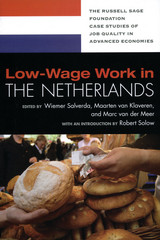 Low-Wage Work in the Netherlands
Weimer Salverda
Russell Sage Foundation, 2008 The Dutch economy has often been heralded for accomplishing solid employment growth within a generous welfare system. In recent years, the Netherlands has seen a rise in low-wage work and has maintained one of the lowest unemployment rates in the European Union. Low-Wage Work in the Netherlands narrows in on the causes and consequences of this new development. The authors find that the increase in low-wage work can be partly attributed to a steep rise in the number of part-time jobs and non-standard work contracts—46 percent of Dutch workers hold part-time jobs. The decline in full-time work has challenged historically powerful Dutch unions and has led to a slow but steady dismantling of many social insurance programs from 1979 onward. At the same time, there are hopeful lessons to be gleaned from the Dutch model: low-wage workers benefit from a well-developed system of income transfers, and many move on to higher paying jobs. Low-Wage Work in the Netherlands paints a nuanced picture of the Dutch economy by analyzing institutions that both support and challenge its low-wage workforce. A Volume in the Russell Sage Foundation Case Studies of Job Quality in Advanced Economies
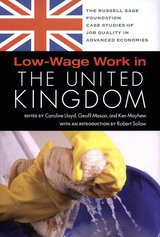 Low-Wage Work in the United Kingdom
Caroline LLoyd
Russell Sage Foundation, 2008 The United Kingdom's labor market policies place it in a kind of institutional middle ground between the United States and continental Europe. Low pay grew sharply between the late 1970s and the mid-1990s, in large part due to the decline of unions and collective bargaining and the removal of protections for the low paid. The changes instituted by Tony Blair's New Labour government since 1997, including the introduction of the National Minimum Wage, halted the growth in low pay but have not reversed it. Low-Wage Work in the United Kingdom explains why the current level of low-paying work remains one of the highest in Europe. The authors argue that the failure to deal with low pay reflects a policy approach which stressed reducing poverty, but also centers on the importance of moving people off benefits and into work, even at low wages. The U.K. government has introduced a version of the U.S. welfare to work policies and continues to stress the importance of a highly flexible and competitive labor market. A central policy theme has been that education and training can empower people to both enter work and to move into better paying jobs. The case study research reveals the endemic nature of low paid work and the difficulties workers face in escaping from the bottom end of the jobs ladder. However, compared to the United States, low paid workers in the United Kingdom do benefit from in-work social security benefits, targeted predominately at those with children, and entitlements to non-pay benefits such as annual leave, maternity and sick pay, and crucially, access to state-funded health care. Low-Wage Work in the United Kingdom skillfully illustrates the way that the interactions between government policies, labor market institutions, and the economy have ensured that low pay remains a persistent problem within the United Kingdom. A Volume in the Russell Sage Foundation Case Studies of Job Quality in Advanced Economies
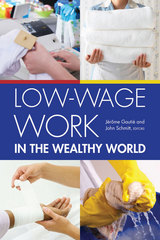 Low-Wage Work in the Wealthy World
Jerome Gautie
Russell Sage Foundation, 2010 As global flows of goods, capital, information, and people accelerate competitive pressure on businesses throughout the industrialized world, firms have responded by reorganizing work in a variety of efforts to improve efficiency and cut costs. In the United States, where minimum wages are low, unions are weak, and immigrants are numerous, this has often lead to declining wages, increased job insecurity, and deteriorating working conditions for workers with little bargaining power in the lower tiers of the labor market. Low-Wage Work in the Wealthy World builds on an earlier Russell Sage Foundation study (Low-Wage America) to compare the plight of low-wage workers in the United States to five European countries—Denmark, France, Germany, the Netherlands, and the United Kingdom—where wage supports, worker protections, and social benefits have generally been stronger. By examining low-wage jobs in systematic case studies across five industries, this groundbreaking international study goes well beyond standard statistics to reveal national differences in the quality of low-wage work and the well being of low-wage workers. The United States has a high percentage of low-wage workers—nearly three times more than Denmark and twice more than France. Since the early 1990s, however, the United Kingdom, the Netherlands, and Germany have all seen substantial increases in low-wage jobs. While these jobs often entail much the same drudgery in Europe and the United States, quality of life for low-wage workers varies substantially across countries. The authors focus their analysis on the "inclusiveness" of each country's industrial relations system, including national collective bargaining agreements and minimum-wage laws, and the generosity of social benefits such as health insurance, pensions, family leave, and paid vacation time—which together sustain a significantly higher quality of life for low-wage workers in some countries. Investigating conditions in retail sales, hospitals, food processing, hotels, and call centers, the book's industry case studies shed new light on how national institutions influence the way employers organize work and shape the quality of low-wage jobs. A telling example: in the United States and several European nations, wages and working conditions of front-line workers in meat processing plants are deteriorating as large retailers put severe pressure on prices, and firms respond by employing low-wage immigrant labor. But in Denmark, where unions are strong, and, to a lesser extent, in France, where the statutory minimum wage is high, the low-wage path is blocked, and firms have opted instead to invest more heavily in automation to raise productivity, improve product quality, and sustain higher wages. However, as Low-Wage Work in the Wealthy World also shows, the European nations' higher level of inclusiveness is increasingly at risk. "Exit options," both formal and informal, have emerged to give employers ways around national wage supports and collectively bargained agreements. For some jobs, such as room cleaners in hotels, stronger labor relations systems in Europe have not had much impact on the quality of work. Low-Wage Work in the Wealthy World offers an analysis of low-wage work in Europe and the United States based on concrete, detailed, and systematic contrasts. Its revealing case studies not only provide a human context but also vividly remind us that the quality and incidence of low-wage work is more a matter of national choice than economic necessity and that government policies and business practices have inevitable consequences for the quality of workers' lives. A Volume in the Russell Sage Foundation Case Studies of Job Quality in Advanced Economies
 Loyal Dissent: Memoir of a Catholic Theologian
Charles E. Curran
Georgetown University Press, 2006 Loyal Dissent is the candid and inspiring story of a Catholic priest and theologian who, despite being stripped of his right to teach as a Catholic theologian by the Vatican, remains committed to the Catholic Church. Over a nearly fifty-year career, Charles E. Curran has distinguished himself as the most well-known and the most controversial Catholic moral theologian in the United States. On occasion, he has disagreed with official church teachings on subjects such as contraception, homosexuality, divorce, abortion, moral norms, and the role played by the hierarchical teaching office in moral matters. Throughout, however, Curran has remained a committed Catholic, a priest working for the reform of a pilgrim church. His positions, he insists, are always in accord with the best understanding of Catholic theology and always dedicated to the good of the church. In 1986, years of clashes with church authorities finally culminated in a decision by the Congregation for the Doctrine of the Faith, headed by then-Cardinal Josef Ratzinger, that Curran was neither suitable nor eligible to be a professor of Catholic theology. As a result of that Vatican condemnation, he was fired from his teaching position at Catholic University of America and, since then, no Catholic university has been willing to hire him. Yet Curran continues to defend the possibility of legitimate dissent from those teachings of the Catholic faith—not core or central to it—that are outside the realm of infallibility. In word and deed, he has worked in support of more academic freedom in Catholic higher education and for a structural change in the church that would increase the role of the Catholic community—from local churches and parishes to all the baptized people of God. In this poignant and passionate memoir, Curran recounts his remarkable story from his early years as a compliant, pre-Vatican II Catholic through decades of teaching and writing and a transformation that has brought him today to be recognized as a leader of progressive Catholicism throughout the world.
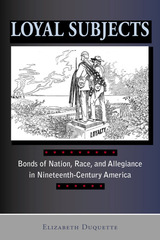 Loyal Subjects: Bonds of Nation, Race, and Allegiance in Nineteenth-Century America
Duquette, Elizabeth
Rutgers University Press, 2010 When one nation becomes two, or when two nations become one, what does national affiliation mean or require? Elizabeth Duquette answers this question by demonstrating how loyalty was used during the U.S. Civil War to define proper allegiance to the Union. For Northerners during the war, and individuals throughout the nation after Appomattox, loyalty affected the construction of national identity, moral authority, and racial characteristics.
Loyal Subjects considers how the Civil War complicated the cultural value of emotion, especially the ideal of sympathy. Through an analysis of literary works written during and after the conflict-from Nathaniel Hawthorne's "Chiefly About War Matters" through Henry James's The Bostonians and Charles Chestnutt's "The Wife of His Youth," to the Pledge of Allegiance and W.E.B. Du Bois's John Brown, among many others-Duquette reveals that although American literary criticism has tended to dismiss the Civil War's impact, postwar literature was profoundly shaped by loyalty.
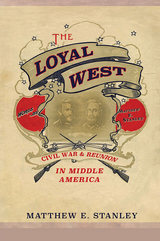 The Loyal West: Civil War and Reunion in Middle America
Matthew E. Stanley
University of Illinois Press, 2017 A free region deeply influenced by southern mores, the Lower Middle West represented a true cultural and political median in Civil War–era America. Here grew a Unionism steeped in the mythology of the Loyal West--a myth rooted in regional and racial animosities and the belief that westerners had won the war. Matthew E. Stanley's intimate study explores the Civil War, Reconstruction, and sectional reunion in this bellwether region. Using the lives of area soldiers and officers as a lens, Stanley reveals a place and a strain of collective memory that was anti-rebel, anti-eastern, and anti-black in its attitudes--one that came to be at the forefront of the northern retreat from Reconstruction and toward white reunion. The Lower Middle West's embrace of black exclusion laws, origination of the Copperhead movement, backlash against liberalizing war measures, and rejection of Reconstruction were all pivotal to broader American politics. And the region's legacies of white supremacy--from racialized labor violence to sundown towns to lynching--found malignant expression nationwide, intersecting with how Loyal Westerners remembered the war. A daring challenge to traditional narratives of section and commemoration, The Loyal West taps into a powerful and fascinating wellspring of Civil War identity and memory.
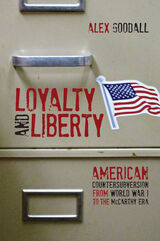 Loyalty and Liberty: American Countersubversion from World War 1 to the McCarthy Era
Alex Goodall
University of Illinois Press, 2013 Loyalty and Liberty offers the first comprehensive account of the politics of countersubversion in the United States prior to the McCarthy era. Beginning with the loyalty politics of World War I, Alex Goodall traces the course of American countersubversion as it ebbed and flowed throughout the first half of the twentieth century, culminating in the rise of McCarthyism and the Cold War. This sweeping study explores how antisubversive fervor was dampened in the 1920s in response to the excesses of World War I, transformed by the politics of antifascism in the Depression era, and rekindled in opposition to Roosevelt's ambitious New Deal policies in the later 1930s and 1940s. Identifying varied interest groups such as business tycoons, Christian denominations, and Southern Democrats, Goodall demonstrates how countersubversive politics was far from unified: groups often pursued clashing aims while struggling to balance the competing pulls of loyalty to the nation and liberty of thought, speech, and action. Meanwhile, the federal government pursued its own course, which alternately converged with and diverged from the paths followed by private organizations. By the end of World War II, alliances on the left and right had largely consolidated into the form they would keep during the Cold War. Anticommunists on the right worked to rein in the supposedly dictatorial ambitions of the Roosevelt administration, while New Deal liberals divided into several camps: the Popular Front, civil liberties activists, and embryonic Cold Warriors who struggled with how to respond to communist espionage in Washington and communist influence in politics more broadly. Rigorous in its scholarship yet accessible to a wide audience, Goodall's masterful study shows how opposition to radicalism became a defining ideological question of American life.
Loyalty And Locality: Popular Allegiance in Devon during the English Civil War
Mark Stoyle
University of Exeter Press, 1996 This volume is a study of popular behaviour during the English Civil War. The book makes three claims. The first is that English counties did not behave as homogeneous units during the conflict of 1642-46, but that they divided instead along regional lines, certain areas supporting Parliament, others supporting the King. The second is that this general rule applied to cities too, and that in urban communities it is possible to discern both 'Royalist' and 'Parliamentarian' parishes. The third is that these internal divisions were not simply temporary alignments, conjured up by extraordinary circumstances, but that they reflected deep and enduring splits in local society, contrasting patterns of popular behaviour stretching back over very many years.
Loyalty on the Frontier: Sketches of Union Men of the South-West with Incidents and Adventures in Rebellion on the Border
A.W. Bishop
University of Arkansas Press, 2003 First published in 1863, this book has the immediacy, passion, and intimacy of its wartime context. It tells the remarkable story of Albert Webb Bishop, a New York lawyer turned Union soldier, who in 1862 accepted a commission as lieutenant colonel in a regiment of Ozark mountaineers. While maintaining Union control of northwest Arkansas, he collected stories of the social coercion, political secession, and brutal terrorism that scarred the region. His larger goal, however, was to popularize and inspire sympathy for the South’s Unionists and to chronicle the triumph of Unionism in a Confederate state. His account points to the complex and divisive nature of Confederate society and in doing so provides a perspective that has long been absent from discussions of the Civil War
LQ vol 83 num 1
The University of Chicago Press
University of Chicago Press Journals, 2013
LQ vol 83 num 2
The University of Chicago Press
University of Chicago Press Journals, 2013
LQ vol 83 num 3
The University of Chicago Press
University of Chicago Press Journals, 2013
LQ vol 83 num 4
The University of Chicago Press
University of Chicago Press Journals, 2013
LQ vol 84 num 1
The University of Chicago Press
University of Chicago Press Journals, 2014
LQ vol 84 num 2
The University of Chicago Press
University of Chicago Press Journals, 2014
LQ vol 84 num 3
The University of Chicago Press
University of Chicago Press Journals, 2014
LQ vol 84 num 4
The University of Chicago Press
University of Chicago Press Journals, 2014
LQ vol 85 num 1
The University of Chicago Press
University of Chicago Press Journals, 2015
LQ vol 85 num 2
The University of Chicago Press
University of Chicago Press Journals, 2015
LQ vol 85 num 3
The University of Chicago Press
University of Chicago Press Journals, 2015
LQ vol 85 num 4
The University of Chicago Press
University of Chicago Press Journals, 2015
LQ vol 86 num 1
The University of Chicago Press
University of Chicago Press Journals, 2016
LQ vol 86 num 2
The University of Chicago Press
University of Chicago Press Journals, 2016
LQ vol 86 num 3
The University of Chicago Press
University of Chicago Press Journals, 2016
LQ vol 86 num 4
The University of Chicago Press
University of Chicago Press Journals, 2016
LQ vol 87 num 1
The University of Chicago Press
University of Chicago Press Journals, 2017
LQ vol 87 num 2
The University of Chicago Press
University of Chicago Press Journals, 2017
LQ vol 87 num 3
The University of Chicago Press
University of Chicago Press Journals, 2017
LQ vol 87 num 4
The University of Chicago Press
University of Chicago Press Journals, 2017
LQ vol 88 num 1
The University of Chicago Press
University of Chicago Press Journals, 2018
LQ vol 88 num 2
The University of Chicago Press
University of Chicago Press Journals, 2018
LQ vol 88 num 3
The University of Chicago Press
University of Chicago Press Journals, 2018
LQ vol 88 num 4
The University of Chicago Press
University of Chicago Press Journals, 2018
LQ vol 89 num 1
The University of Chicago Press
University of Chicago Press Journals, 2019
LQ vol 89 num 2
The University of Chicago Press
University of Chicago Press Journals, 2019
|
|

